Sinaloa, Sonora and Hidalgo, Mexico, 2021
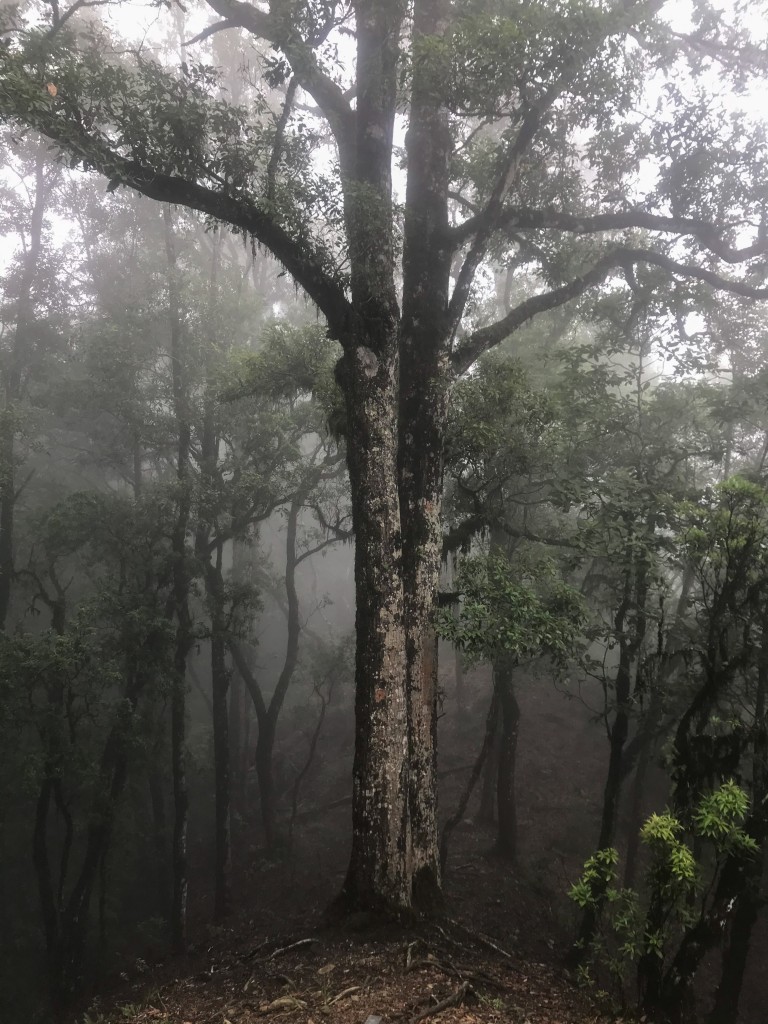
La Mojonera Forest, Zacualtipan
I returned to Mexico in the middle of May 2021 for a week’s small mammaling with my friend Juan Cruzado. Both Venkat Sankar and I have travelled extensively with Juan in search of Mexican mammals (you can find all our trip reports on the Mexico page). Juan is an excellent field biologist, who loves finding mammals and seems to know every biologist in Mexico.
This was my fifth time in Mexico with Juan. The country is jammed full of endemic rodents and will keep me busy for many more visits. On previous trips I have shamelessly followed in the footsteps of Venkat Sankar. This time I decided to give a little back and spent five nights in Sinaloa and Sonora in the north west, areas that Juan does not know well and Venkat has yet to visit. I then flew to Mexico City for two nights in Hidalgo where Venkat and Juan visited in 2019.
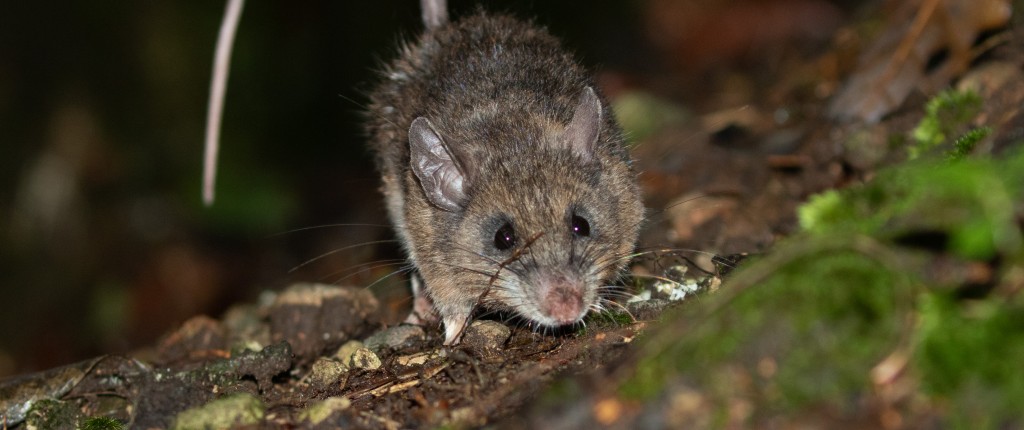
Wide-rostrum Deermouse, Peromyscus latirostris, Zacualtipan
COVID Stuff
I had wanted to take this trip in November 2020, but another COVID wave in Mexico meant several of the parks we wanted to visit were shut. We had to postpone the trip at the last minute. Thankfully Juan is extremely flexible. In May 2021 some parks – especially Alamos – were still difficult to access. But Juan’s excellent network of contacts provided alternative destinations and the help to visit them.

Guayamas sunset
I needed to fill out a travel form to visit Mexico, and for every internal flight, but there was no need for a PCR test. Getting a rapid test before I returned to the USA was easy.
People were wearing masks inside but other than that the only noticeable impact of COVID was on car rental. When everyone stopped traveling many car rental companies sold off much of their fleet and have yet to fully replaced it. I guess this is also the case in Mexico. I reserved SUVs in three cities:Mazatlan, Hermosillo and Mexico City. In all three there were no SUVs available when I arrived. In Mazatlan there were – in fact – no cars at all! We managed to find one for the first night, and then found an independent rental for the rest of our time there (see the Sinaloa section below for details). Elsewhere we were given minivans (allegedly an upgrade). Not ideal.
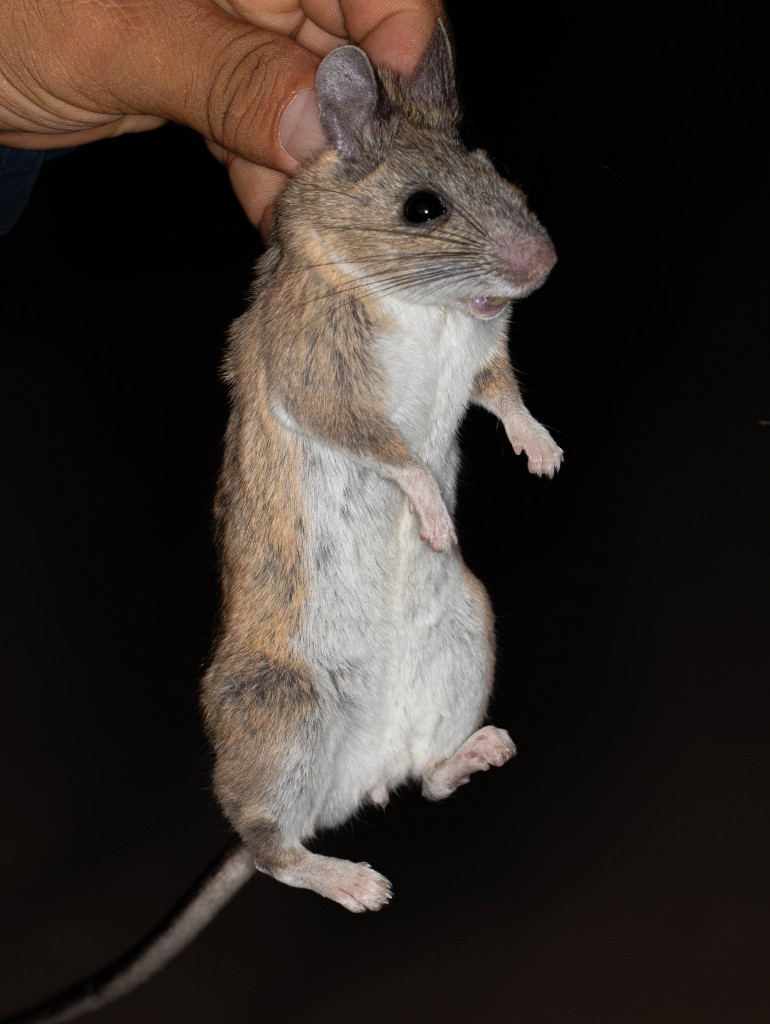
Sonoran Woodrat, Neotoma phenax, Guayamas
Security in Cartel Country
Security in Sinaloa is complicated. I have a lot of confidence in Juan who, through his friends in the area, was confident in where we could, and could not, go. Though Mazatlan is reportedly safe, every time we drove through the city we passed a fleet of 5 or 6 police pick-up trucks, loaded with cops in full body armour and worryingly large machine guns mounted in the rear. If you saw the show Zero Zero Zero, partly based in Monterrey, you will have an accurate picture of what this looks like.
Out of town I didn’t see any sign of trouble. But it was close by: Sinaloa gets very remote very quickly. We stayed two nights with the local community in a reserve – Jinetes de los Machado – where they no longer have any problems with the cartels but used to. A few days earlier Juan had been trapping just 30 minutes away and had needed a police escort. Had that been an option for us I would have taken it (Juan had just caught a rare harvest mouse down the road!) but in general checking mammal traps is exciting enough without the added option of getting kidnapped.
In short Sinaloa is wonderful, but don’t try to explore on your own.
Sinaloa
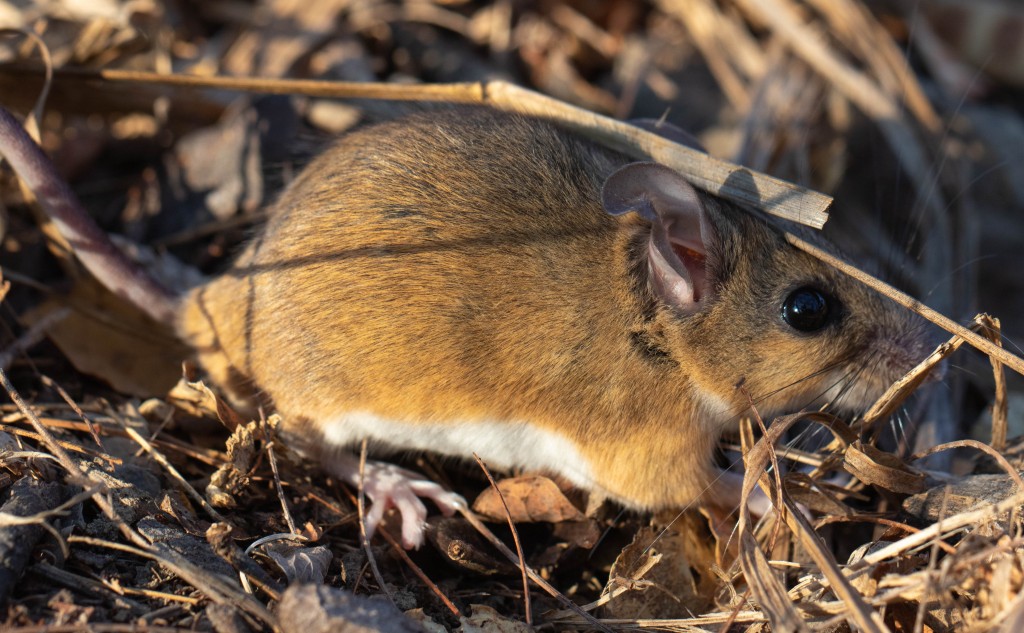
Cactus Mouse, Peromyscus eremicus, Mazatlan
I flew into Mazatlan in the late afternoon and met Juan who had been in the area for several days scouting out locations and taking part in some sort of Inaturalist international bioblitz.
Car hire in Mexico seldom proves straight forward. Today was no exception. Though I had reserved an SUV none of the hire car companies had one, even though Expedia showed they all had inventory. And we needed an SUV to visit the mountains. Thrifty eventually promised that an SUV was being returned the the next morning and we could have that. They called at breakfast to confirm it was waiting for us. An hour later when we got back to the airport the car had been rented to someone else.
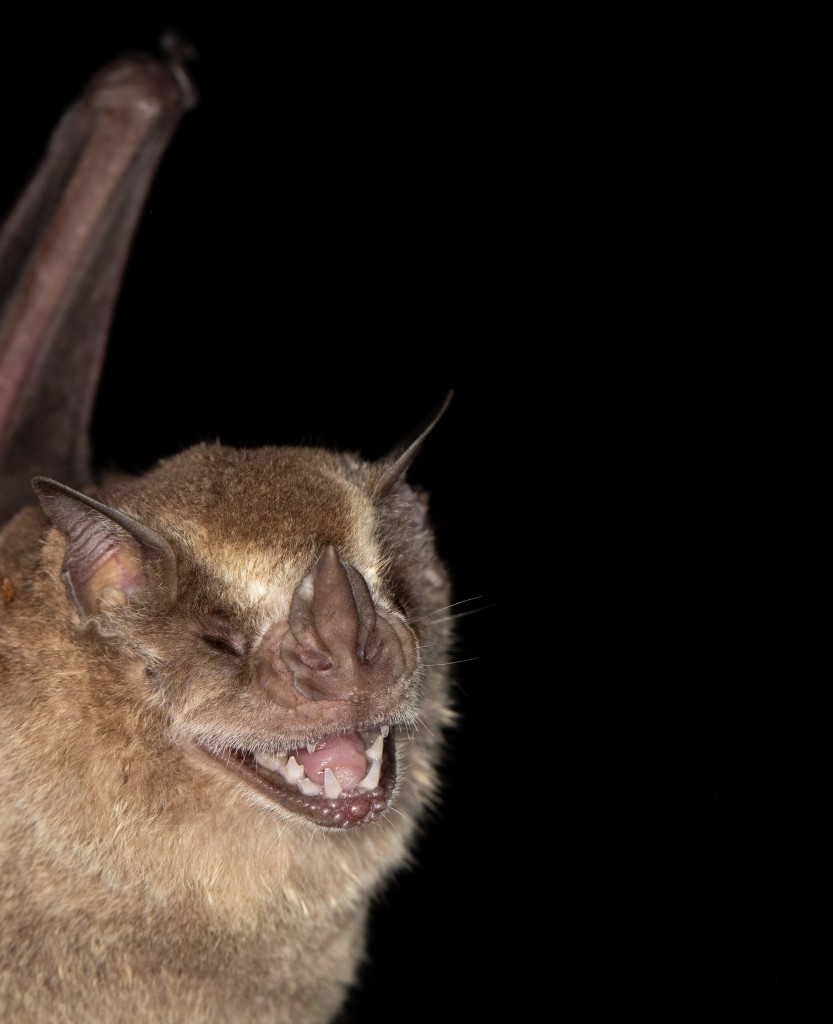
Hairy Fruit-eating Bat, Artibeus hirsutus, Jinetes de los Machado
But while some things doesn’t work like they are supposed to in Mexico, the flip side is that you can (nearly) always find a way to get things done. A couple of calls later and we were back in the city with Jose Tirado (669 153 60 31) the friendly owner of Alascar Rental. He has no website, and no office as far as I could tell, operating a mobile car rental service through word of mouth. But he spoke English well and was great. I would go to him first next time. He rented us a six litre Dodge Durango 4WD – a much more serious off road choice than the Nissan X Trail that Thrifty had failed to provide – and at a cheaper price too. So in hindsight it all worked out well. The road to the reserve is pretty rugged. I am not sure an Xtrail would have made it. Or at least I am not sure my security deposit would have been returned.
Paco’s Reserva, Mazatlan

This small private reserve is right on the edge of Mazatlan and protects a few acres of dry forest. You can email to arrange to visit, something birders often do, and I don’t imagine there would be a problem if you wanted to set traps there too.
Juan is friends with Diego Barrales who manages both this reserve and Jinetes de los Machado where we would head next. We set Sherman traps the night I arrived because it was too late to head into the mountains. We also tried to net bats close to some of the only water on the reserve.
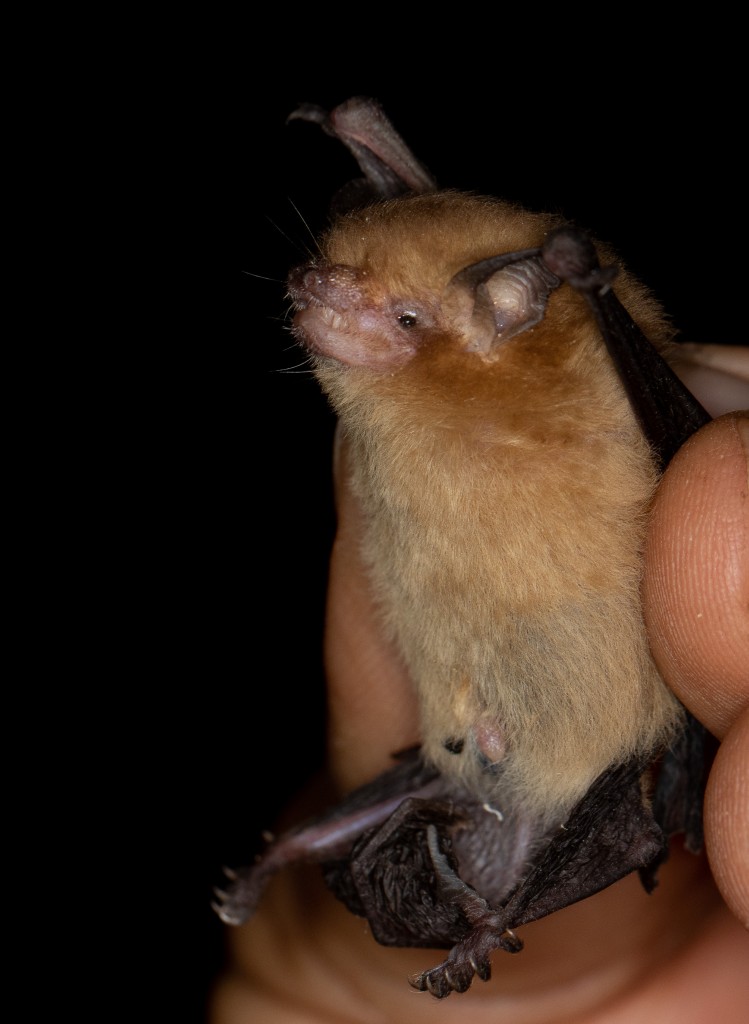
Little Yellow Bat, Rhogeessa parvula
During a few hours batting we caught a few Little Yellow Bats, some Jamaican Fruit-eating Bats and a Little Yellow-shouldered Bat.
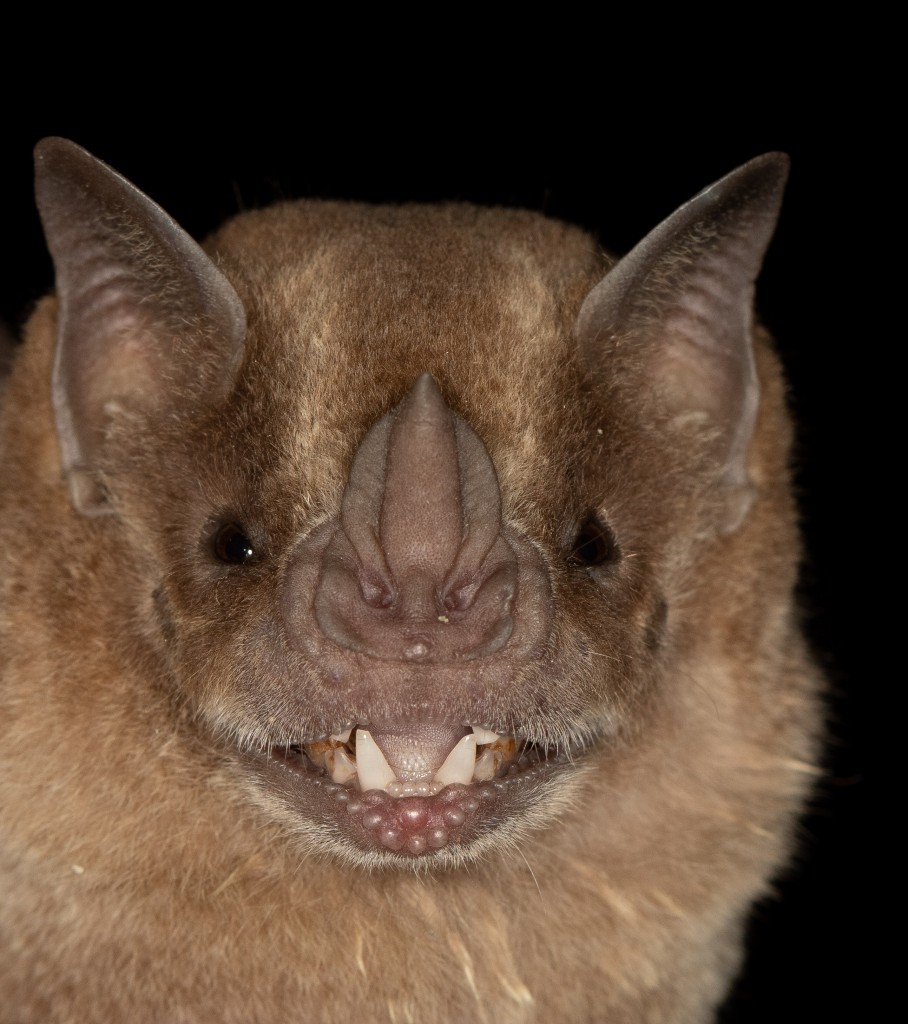
Jamaican Fruit-eating Bat, Artibeus jamaicensis
A Nine-banded Armadillo was wandering around just before dusk, and plenty of rodents showed up in the heat scope.
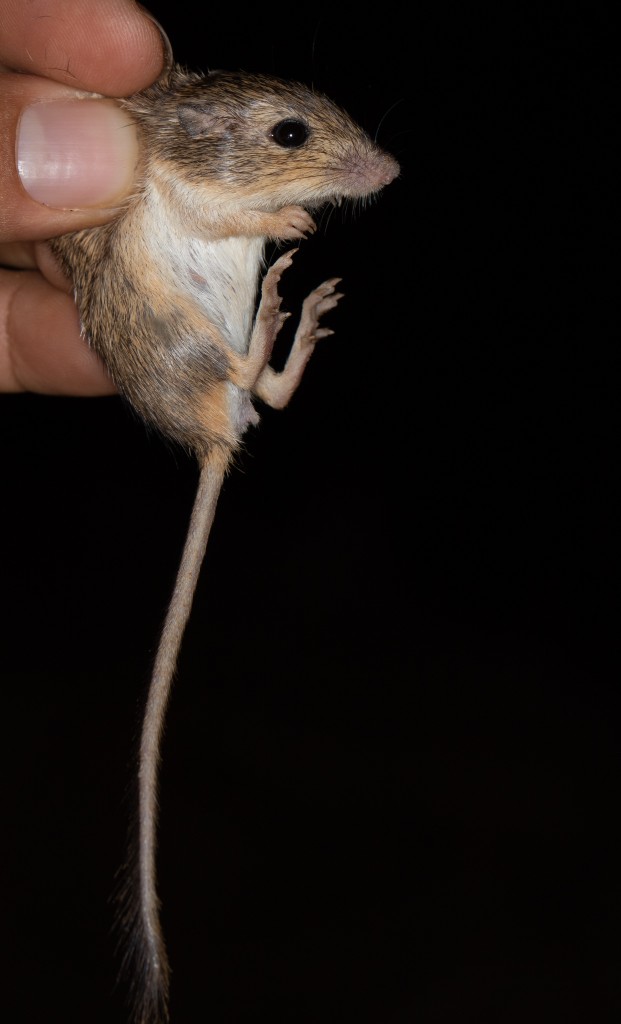
Sinaloan Pocket Mouse, Chaetodipus pernix
I moved one of the traps to a woodpile I saw a rodent retreat into. Fifteen minutes later I watched it – hesitantly – enter the trap. It went in and out twice before tripping the door. A Sinaloan Pocket Mouse. I have heard small mammals go into traps before, but this was the first time I ever watched it happen.
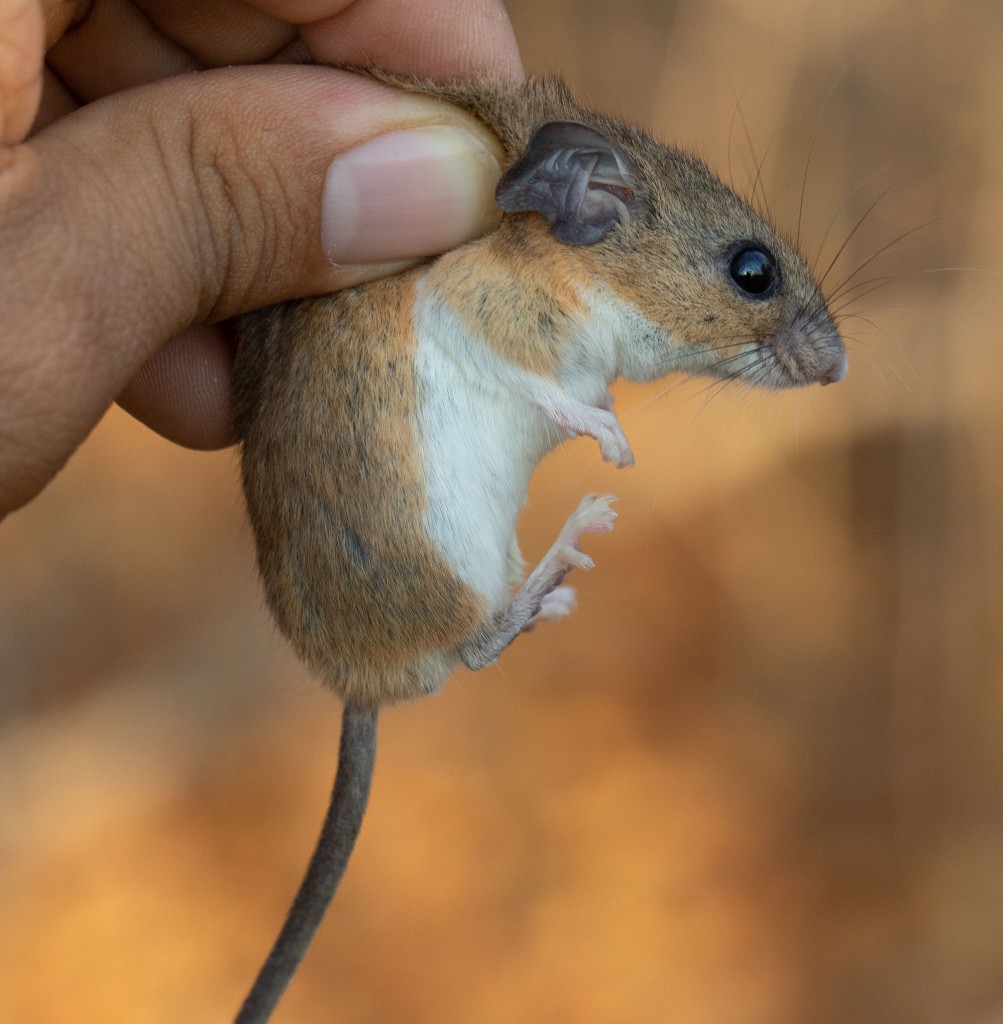
Cactus Mouse, Peromyscus eremicus
The small mammal trapping was good the next morning. We caught several each of three deer mice species: Cactus, Mesquite and Nayarit Deer Mice.
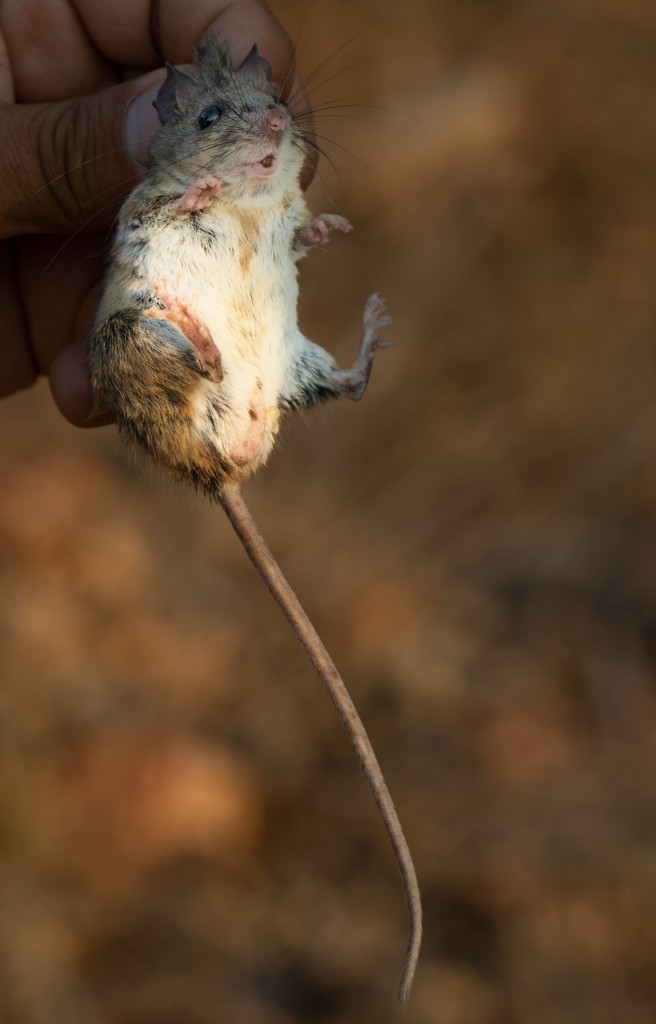
Mesquite Mouse, Peromyscus merriami.
Note the yellow markings on the chest and belly, that some researchers believe distinguish the Mesquite Mouse from the otherwise similar Nayarit Mouse (though some of the literature I have seen since contradicts this). However, the presence of Mesquite trees are also a useful clue to separate this Mesquite from Nayarit Mice, and there were plenty of Mesquite trees here).
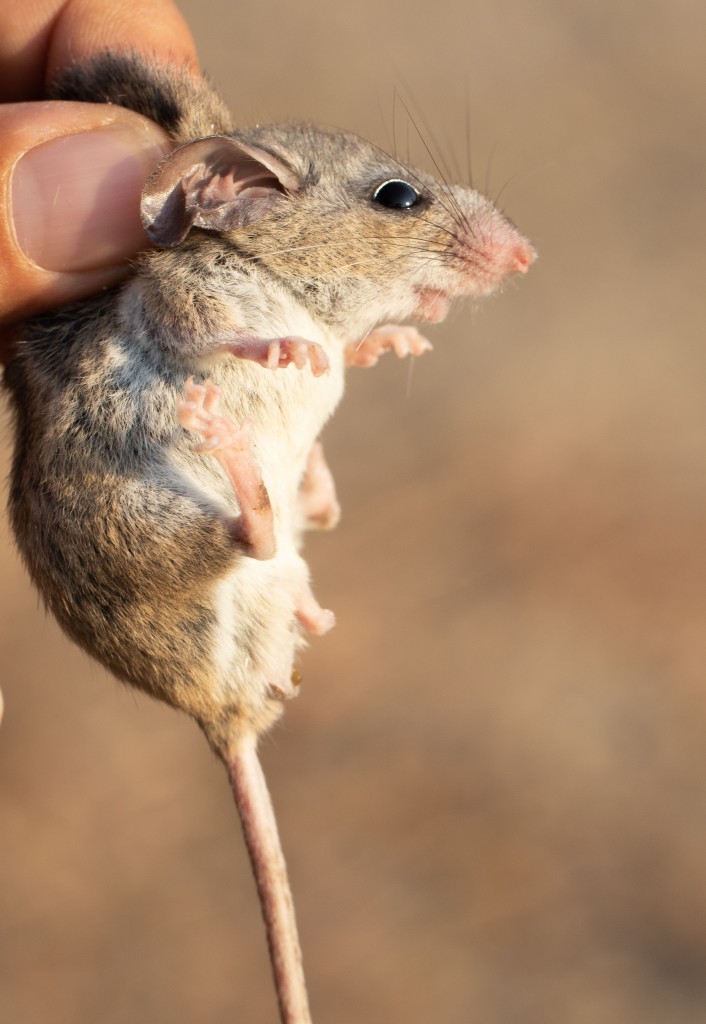
Nayarit Deer Mouse, Peromyscus simulus
Collie’s Squirrels are also quite common here and we saw one at the parking area when we arrived.
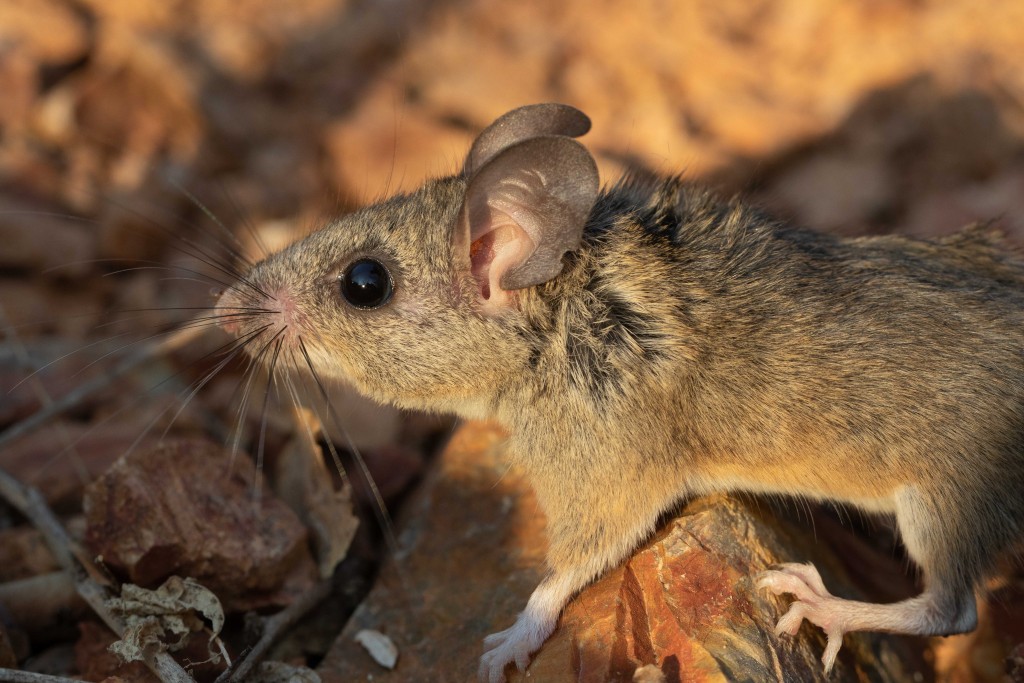
Mesquite Mouse, Peromyscus merriami
A small reserve, but worth a visit if you have a night in Mazatlan.
Jinetes de los Machado
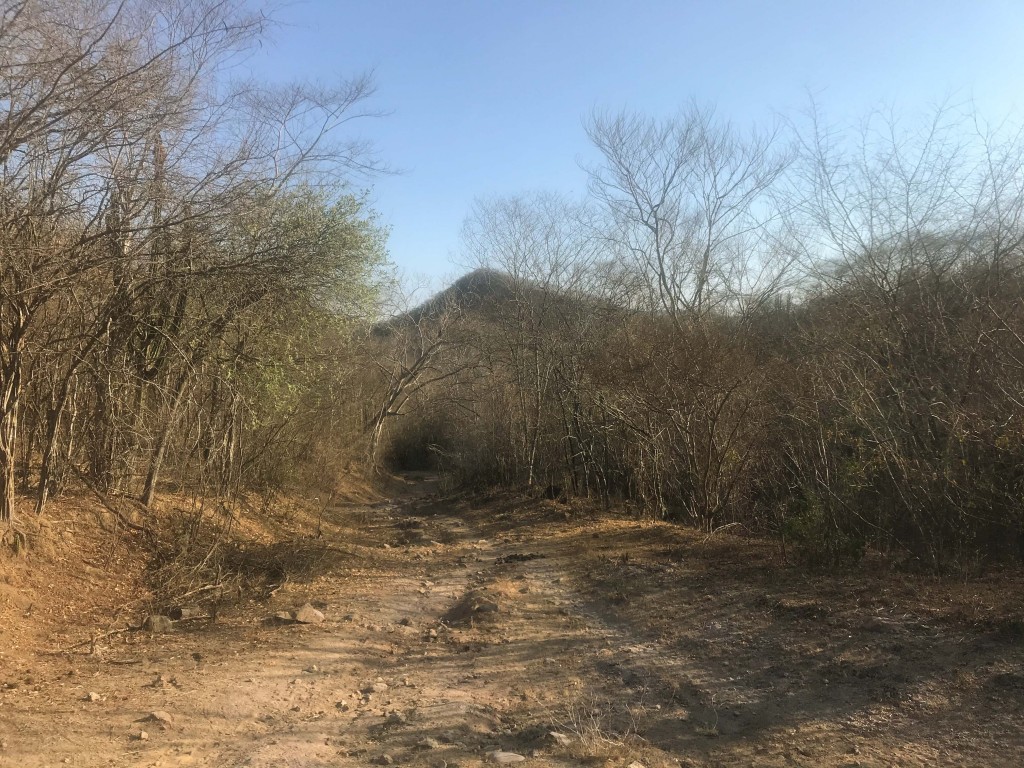
When Juan and I first talked about visiting Sinaloa we had hoped to visit Alamos reserve, where Juan had found some nice bats and rats. But access to Alamos was difficult, at least in part because of COVID, and so instead we visited a community reserve called Jinetes de los Machado (and an article here), a little over 2 hours’ drive from Mazatlan along some rugged dirt mountain roads. Diego Barrales and Gerardo Machado came with us to help.
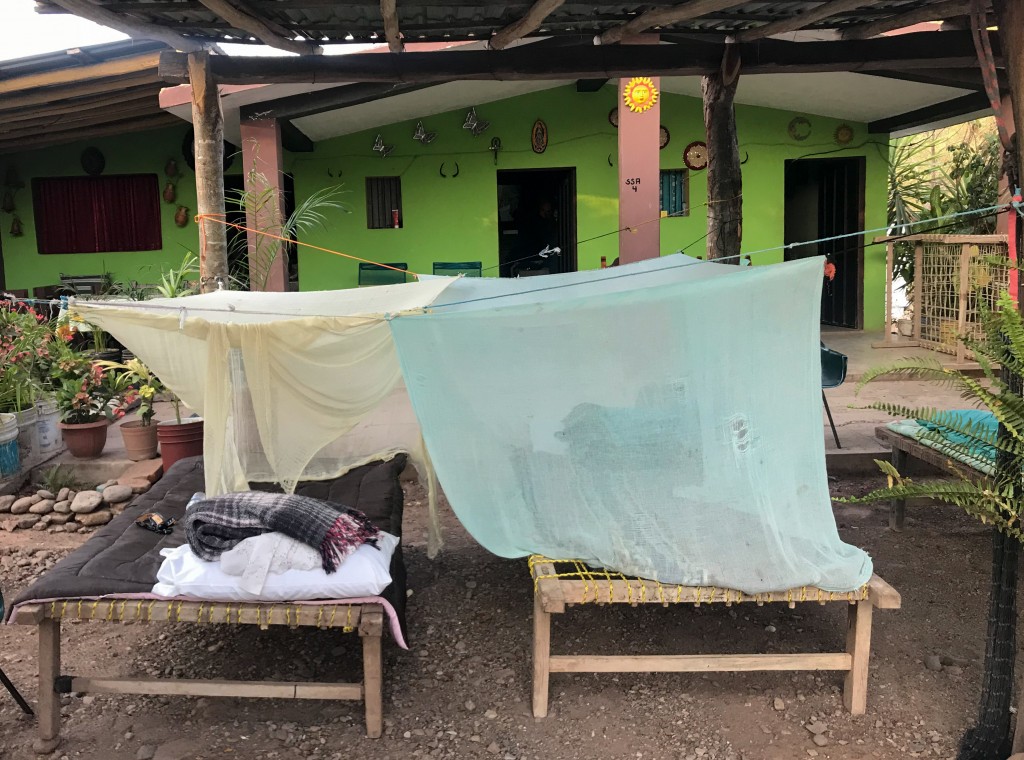
Glamping, Jinetes-style
The 10,000 hectare reserve is a mix of dry tropical forest and crop lands. We stayed in the local community. The rooms were comfortable but too hot at this time of year so we all ended up sleeping on camp beds under mosquito nets in the front yard. The temperature outside was perfect. The only drawback was the cacophony of cattle, donkeys and chickens that began somewhere around 4 a.m, and would have drowned out the noise of a 747 on approach. Actually they began tuning up about 1 a.m but got into full flow by 4 a.m.

Sope
It gets remote pretty quickly in Sinaloa. There is no running water here, no wifi or cell service, and just a little solar power for lighting. But the food was fantastic. Some of the best Mexican food I have ever had. New favorite dishes included “sope” something like a cross between an arepa and a grilled cheese sandwich, and delicious scone-like cakes called gorditos that were freshly baked after dinner. They tasted just like my mum’s Welsh Cakes. Not sure if Wales or Mexico should claim them as their own but perhaps an example of convergent culinary evolution. As you might have guessed I loved this place.
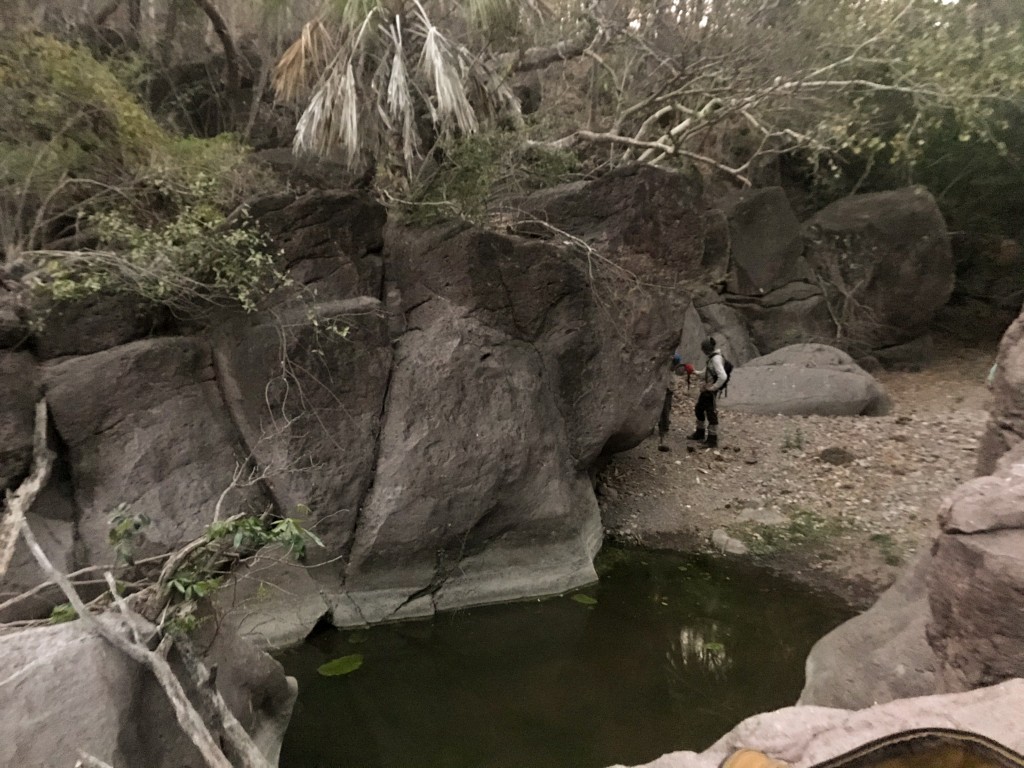
The mammalwatching was also pretty good. We were here two nights. We netted for bats the first night over some scattered pools in a shallow gorge – a lovely spot. And netted the second night by the river close to the community. We set small mammals traps both nights. I did very little during the considerable heat of the day, though Juan was busy collecting camera traps.
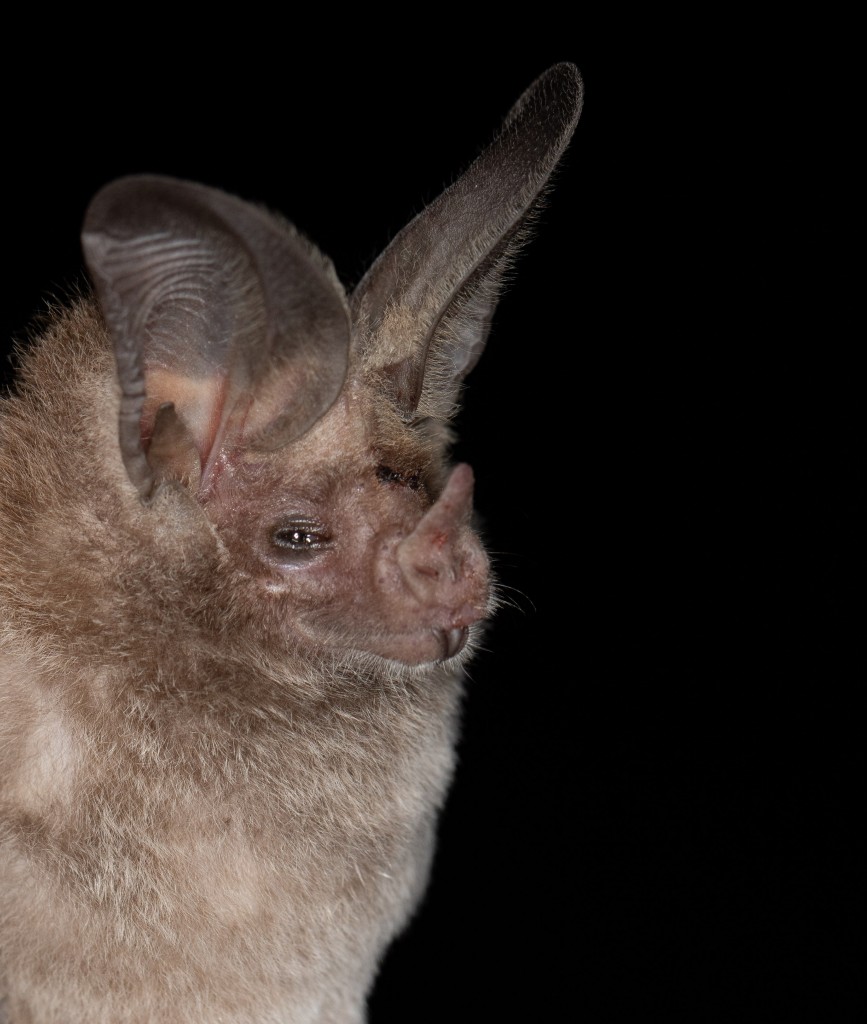
Waterhouse’s Leaf-nosed Bat, Macrotus waterhousii
The first night’s batting was good, especially for the first 90 minutes, catching 7 species. Waterhouse’s Leaf-nosed Bats were arguably the most impressive.
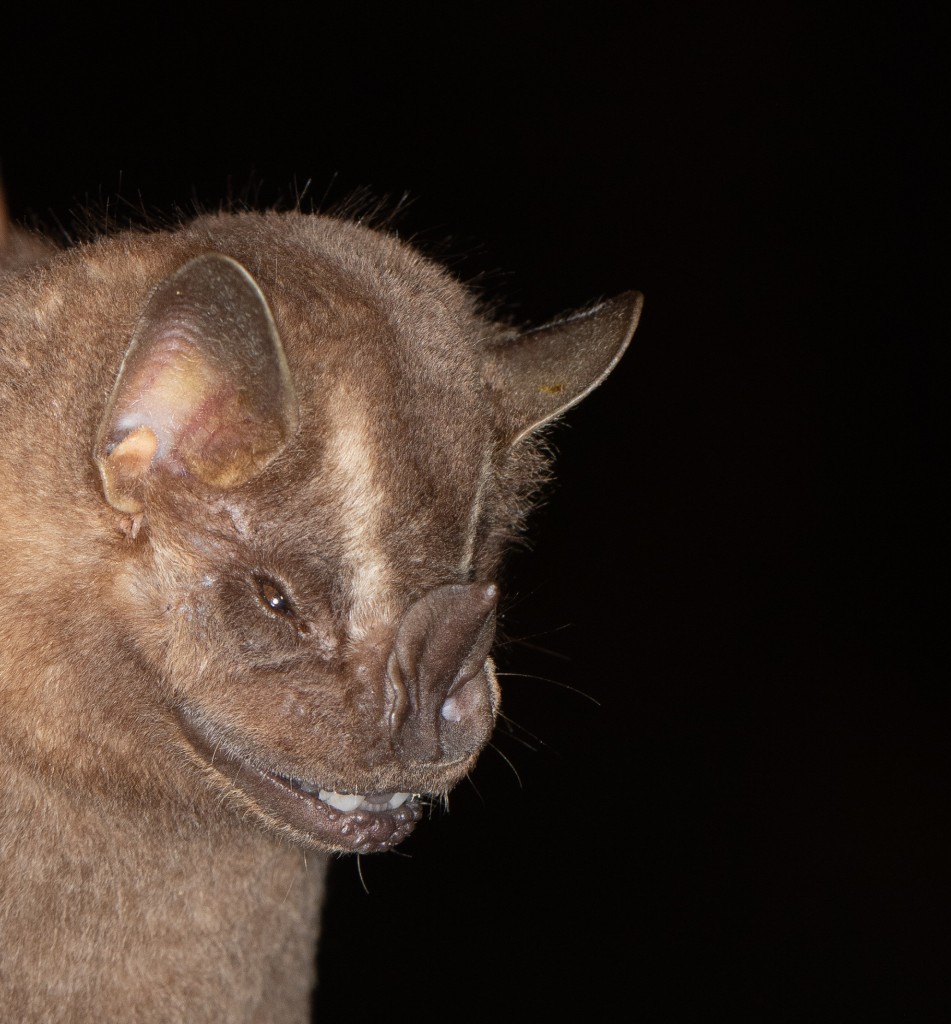
Hairy Fruit-eating Bat, Artibeus hirsutus
Hairy Fruit-eating Bats were my lifer for the night. Though when we caught them we thought they were Mexican Big-eyed Bats. They have a bit of a strange “squashed” face for an artibeus hence the confusion.
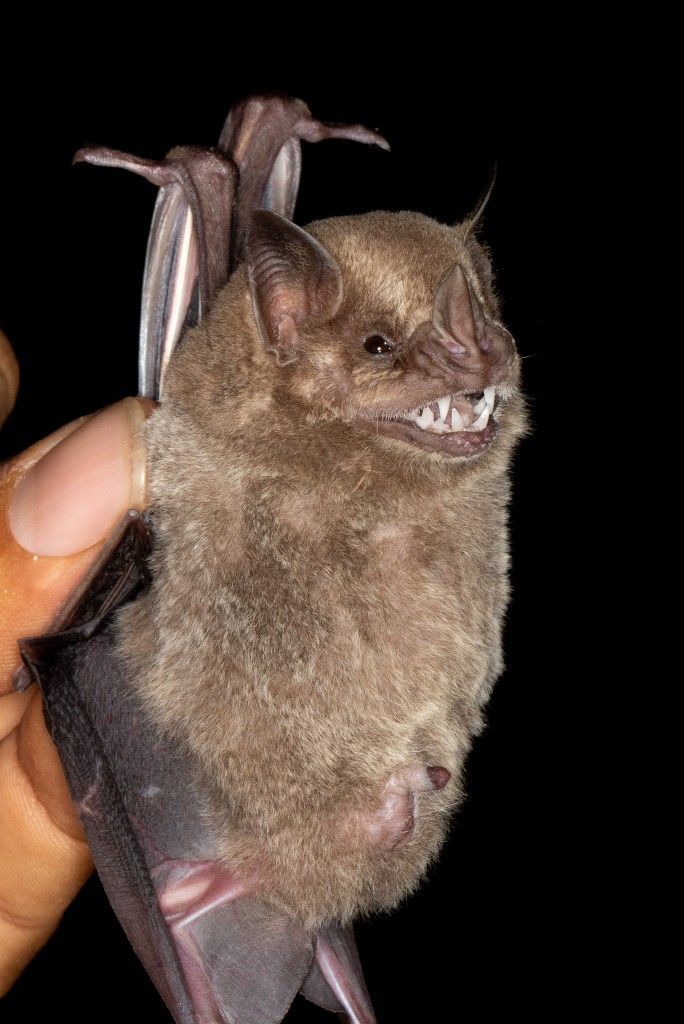
Great Fruit-eating Bat, Artibeus lituratus
Great and Jamaican Fruit-eating Bats.
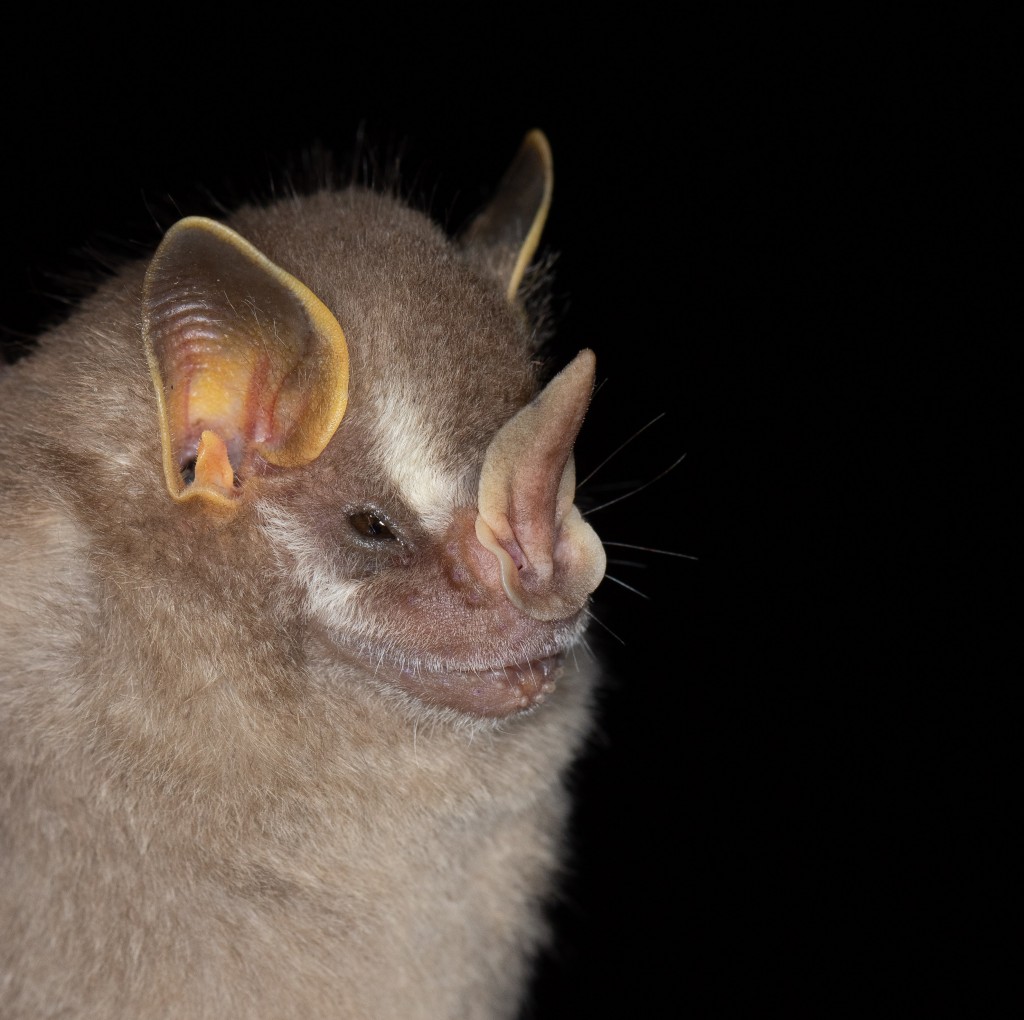
Pygmy Fruit-eating Bat, Artibeus phaeotis
A pretty little Pygmy Fruit-eating Bat.
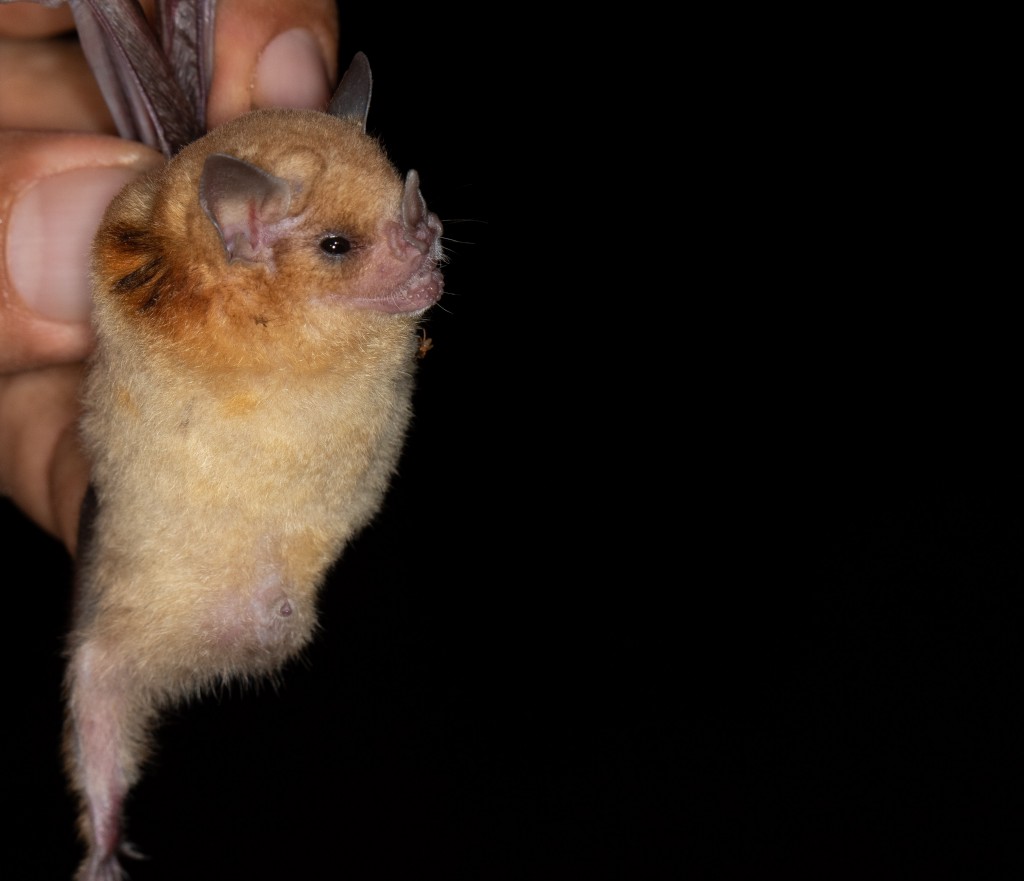
Little Yellow-shouldered Bat, Sturnira lilium
Some Little Yellow-shouldered Bats and a Merriam’s Long-tongued Bat (which became a lifer a few months later when this species was split from G. soricina).
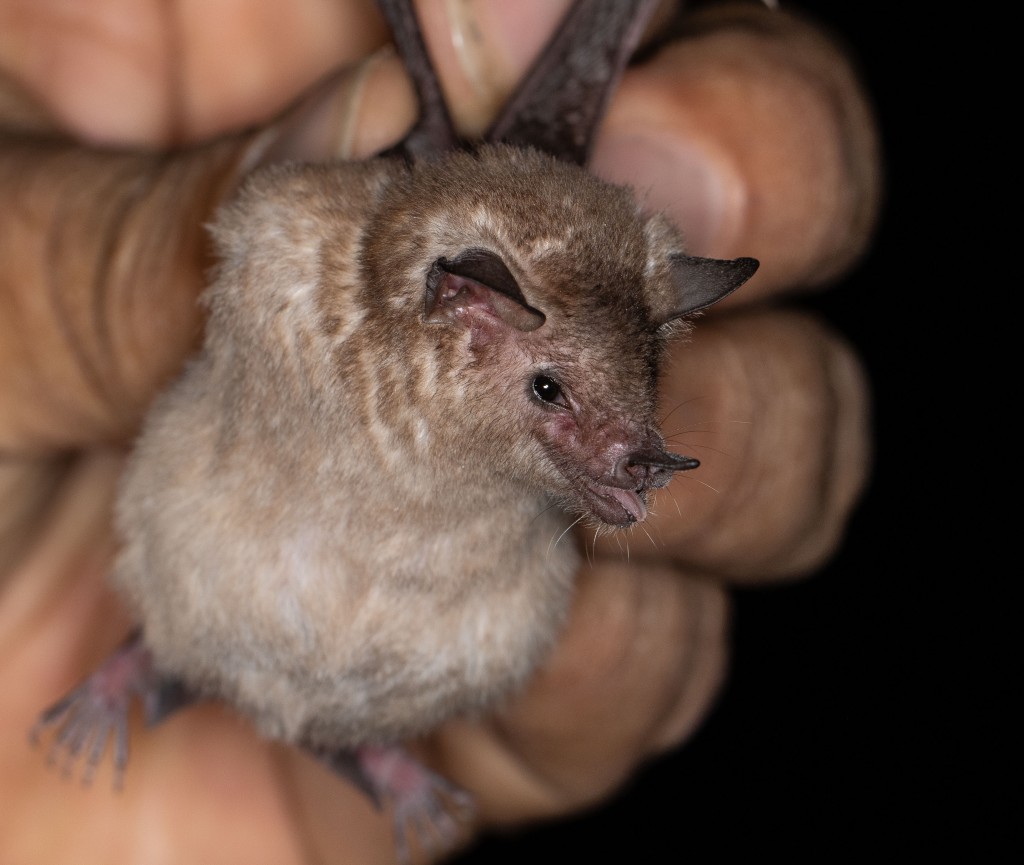
Common Long-tongued Bat, Glossophaga soricina
The next night, near the community, we added Little Yellow Bat and caught more Little Yellow-shouldered and Jamaican Fruit-eating Bats.
We also found a day roost of Long-tongued Bats (either Glossophaga commissarisi or G. soricina) in an abandoned house, which was visited by Waterhouse’s Leaf-nosed Bats and Grey Sac-winged Bats after dark.
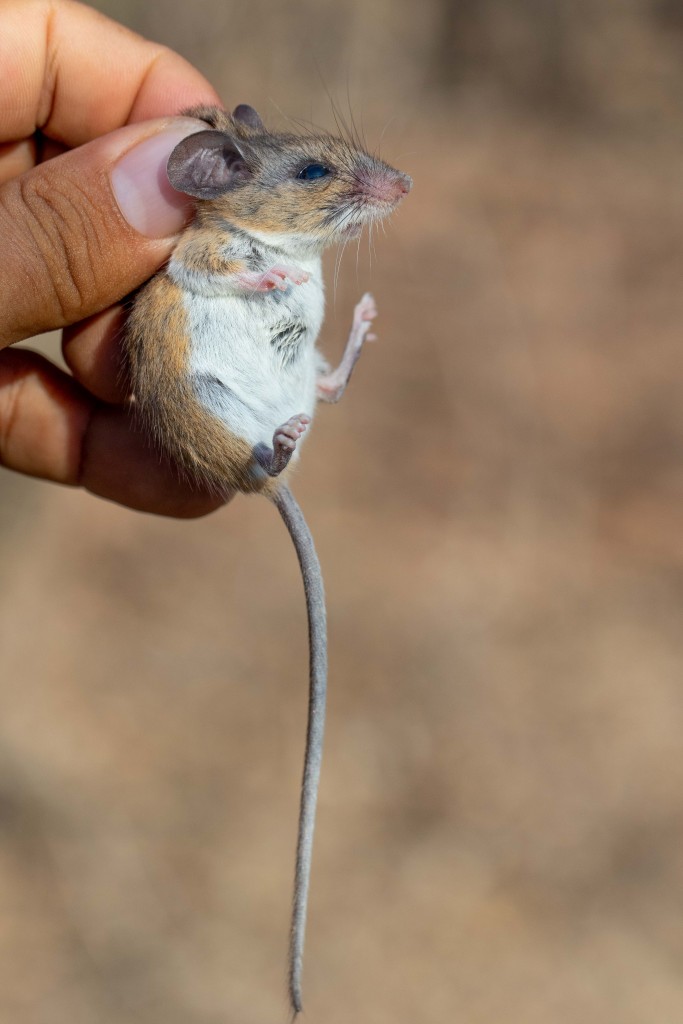
Gleaning Deer Mouse, Peromyscus spicilegus
Trapping was productive with Gleaning and Mesquite Deer Mice; and Sinaloan and Painted Pocket Mice.
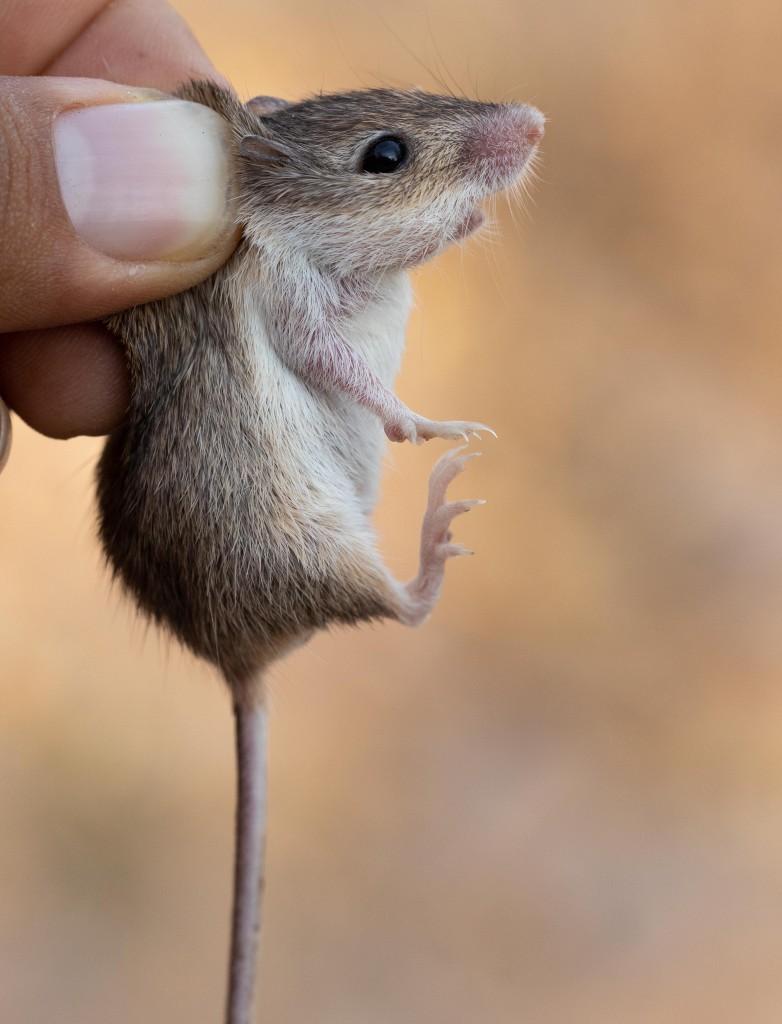
Sinaloan Pocket Mouse, Chaetodipus pernix
The only other mammals were another Collie’s Squirrels and a small band of Coatis on the trail in the early morning. But there are many other species in the area.
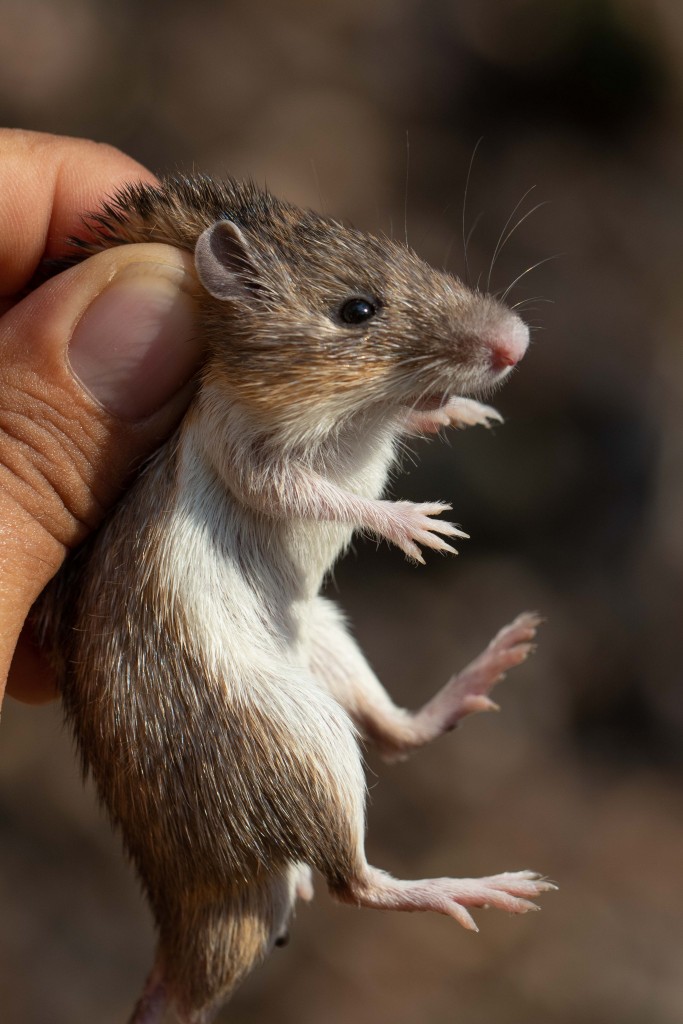
Painted Spiny Pocket Mouse, Heteromys pictus sonorana
We returned to Mazatlan, taking a 6 a.m. bus the next day to the city of Culiacan to catch a flight to Hermosilio.
Sonora
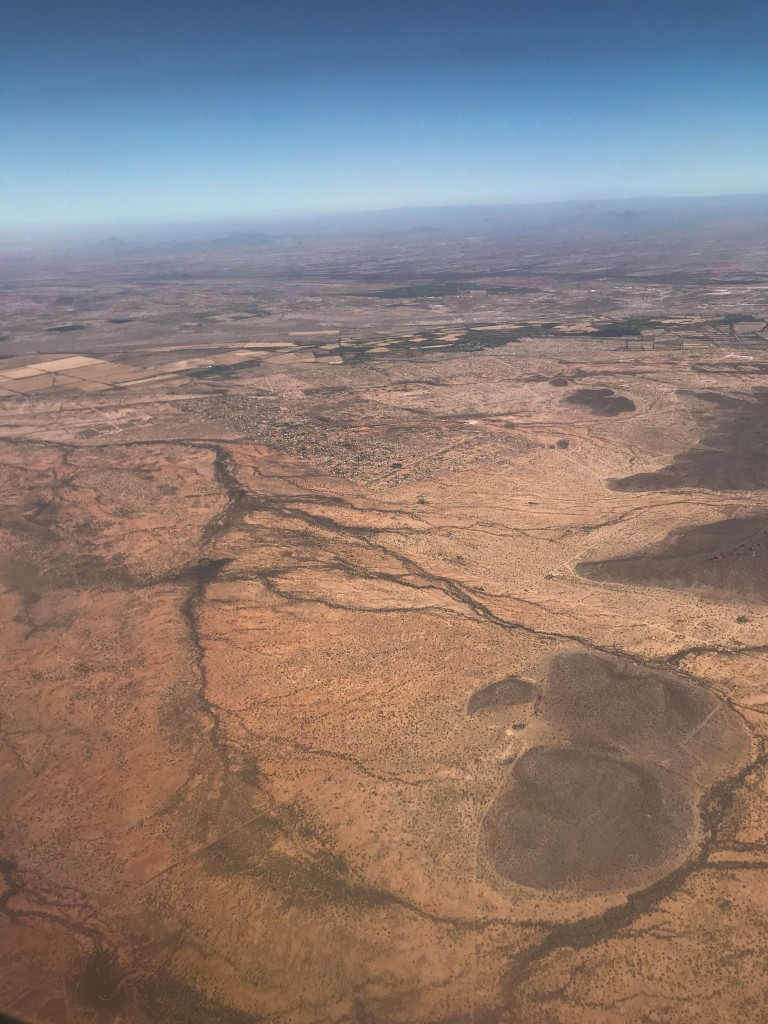
We had two nights in Sonora. We spent the first on the coast in Guayamas, an hour and a half’s drive from Hermosilo.
Guayamas
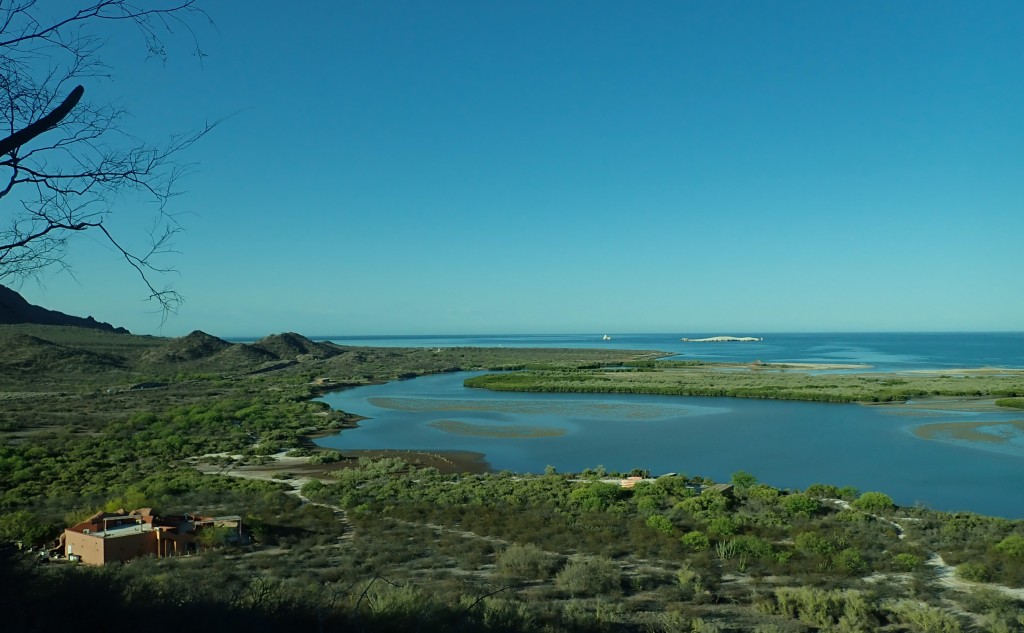
Estero “El Soldado” Reserve
Juan had arranged permission for us to trap on a small reserve, Estero El Soldado, managed by the government. It was a beautiful place on the coast, with huge numbers of rodent burrows peppering the desert heathland. We were excited.
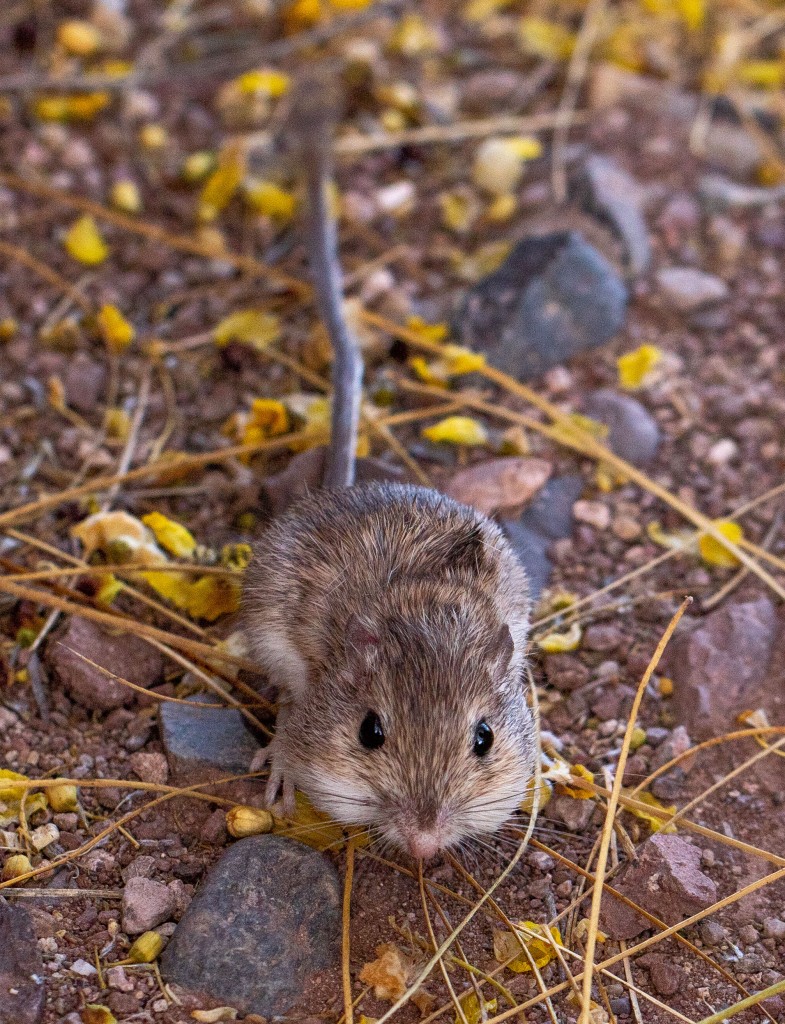
Desert Pocket Mouse, Chaetodipus penicillatus
But in 80 traps we caught just two animals, both in the immediate area of the visitor centre. One was this Desert Pocket Mouse.
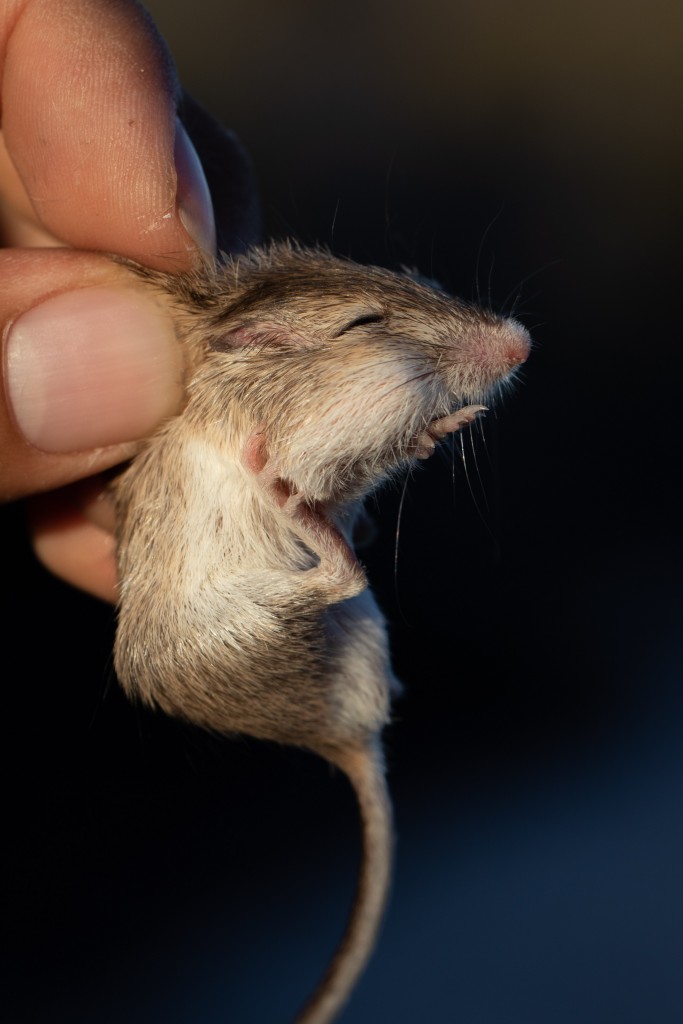
Desert Pocket Mouse, Chaetodipus penicillatus
The other the very local Sonoran Woodrat, which Juan caught in a Sherman trap placed in the visitor centre roof after a tip off from the security guard.
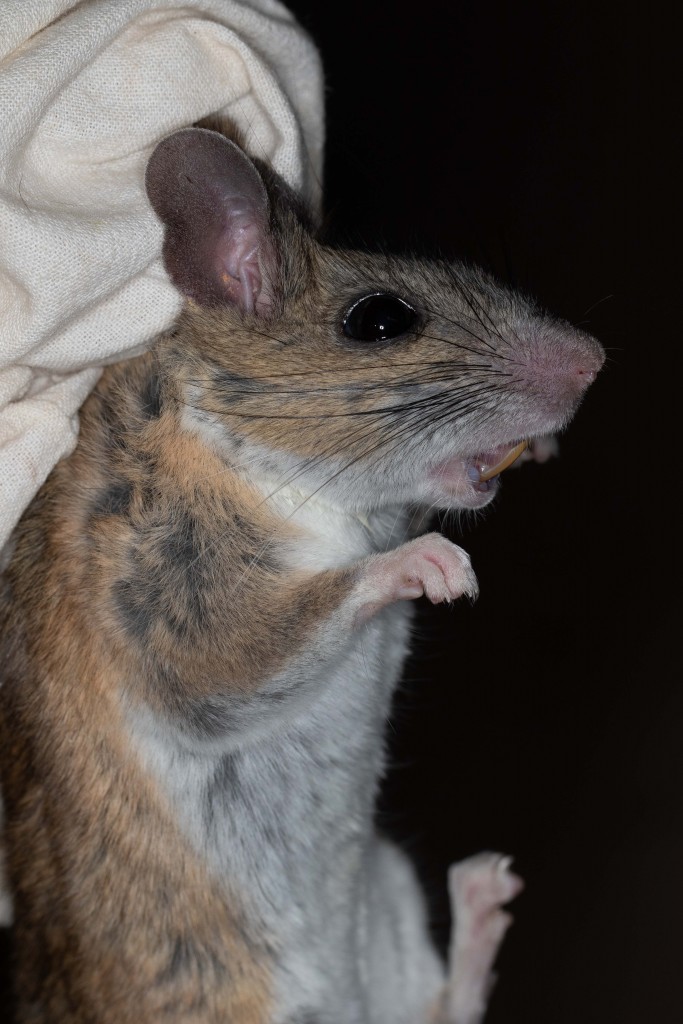
Sonoran Woodrat, Neotoma phenax
We were both surprised that the other 78 traps were empty given how many rodent burrows we saw. Various wandering at night with a thermal scope produced no mammals either.
It was not a great place to try to catch bats. We set up a net below the cave-like roof space outside the visitor centre but without luck, though a few bats appeared to be flying out of there.
Hermosillo
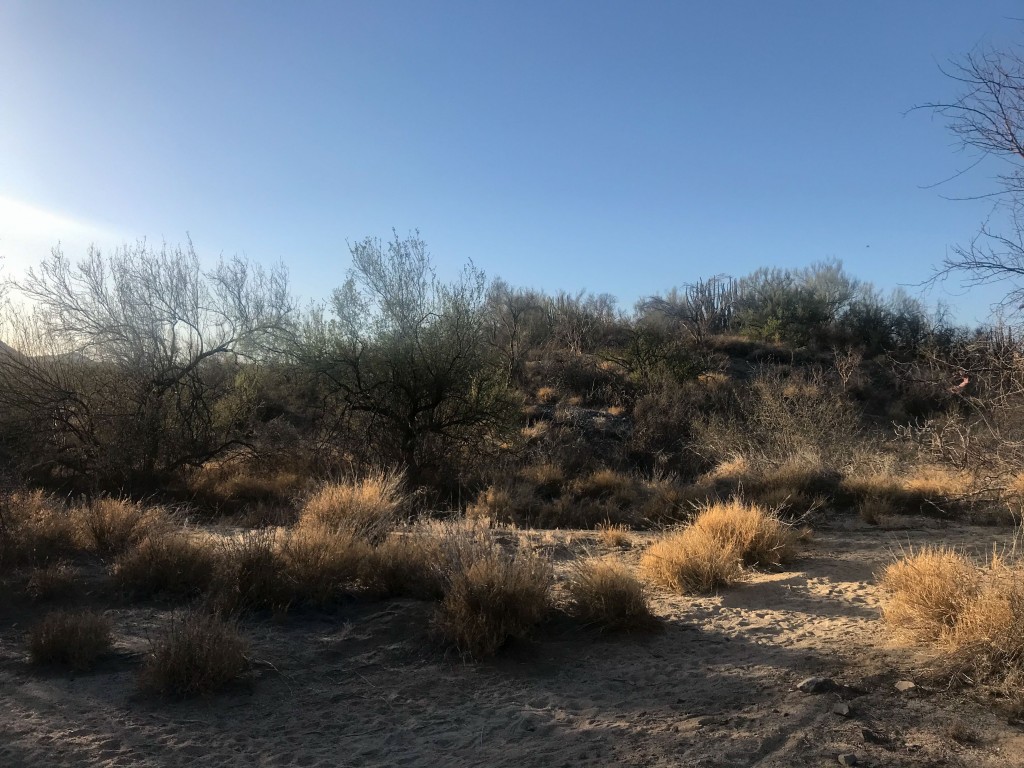
It was very hot back in Hermosillo. Options to trap were quite limited around the city so we set all the Shermans in a small park on edge of town, full of mountain bikers, joggers and dog walkers. But the habitat – sandy soil and rocks – looked promising.
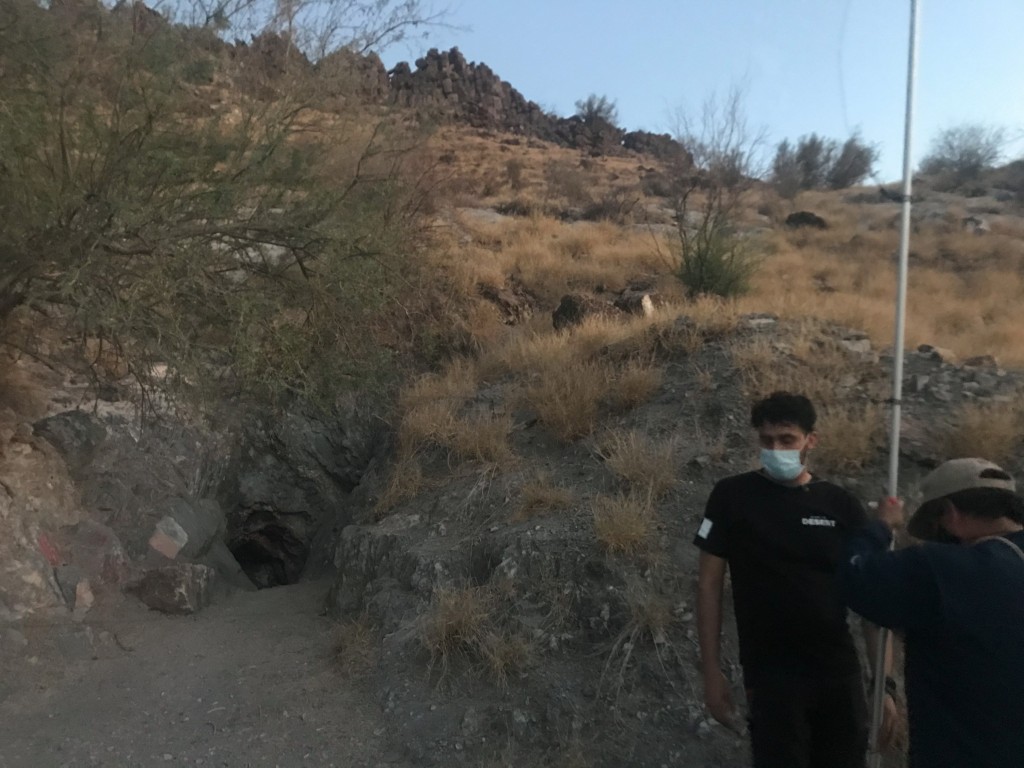
California Leaf-nosed Bat cave
We visited a small cave here that year round is home to varying numbers of Californian Leaf-nosed Bats (email me for details). We set a net in front of it for a couple of hours but though we saw a few bats emerge there were far fewer than we had expected. We caught none.
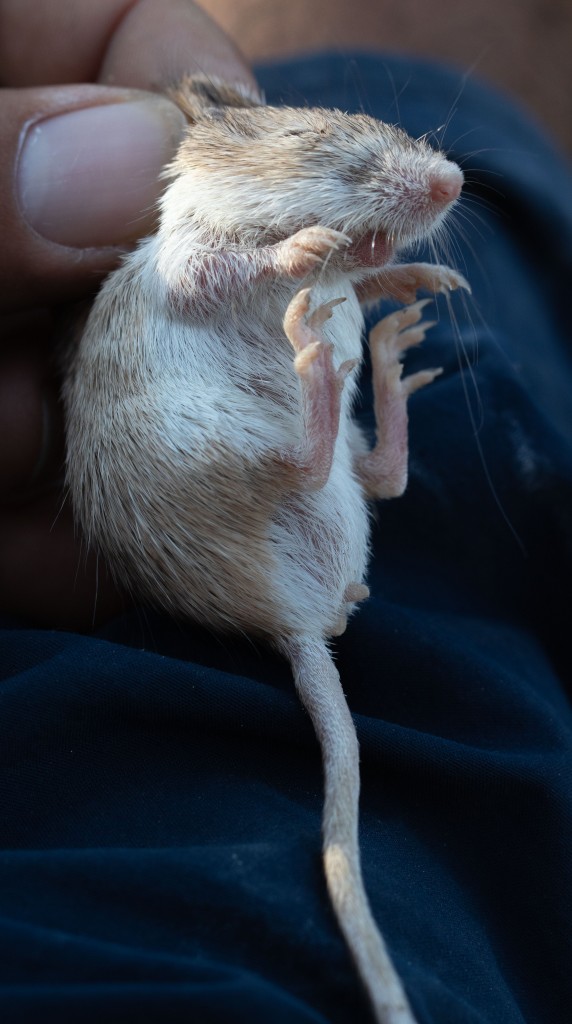
Bailey’s Pocket Mouse (Chaetodipus baileyi)
The next morning we caught a lot of rodents – somewhere between 30 – 40 in the 80 traps. All were pocket mice. A few large Bailey’s Pocket Mice but the majority were smaller.
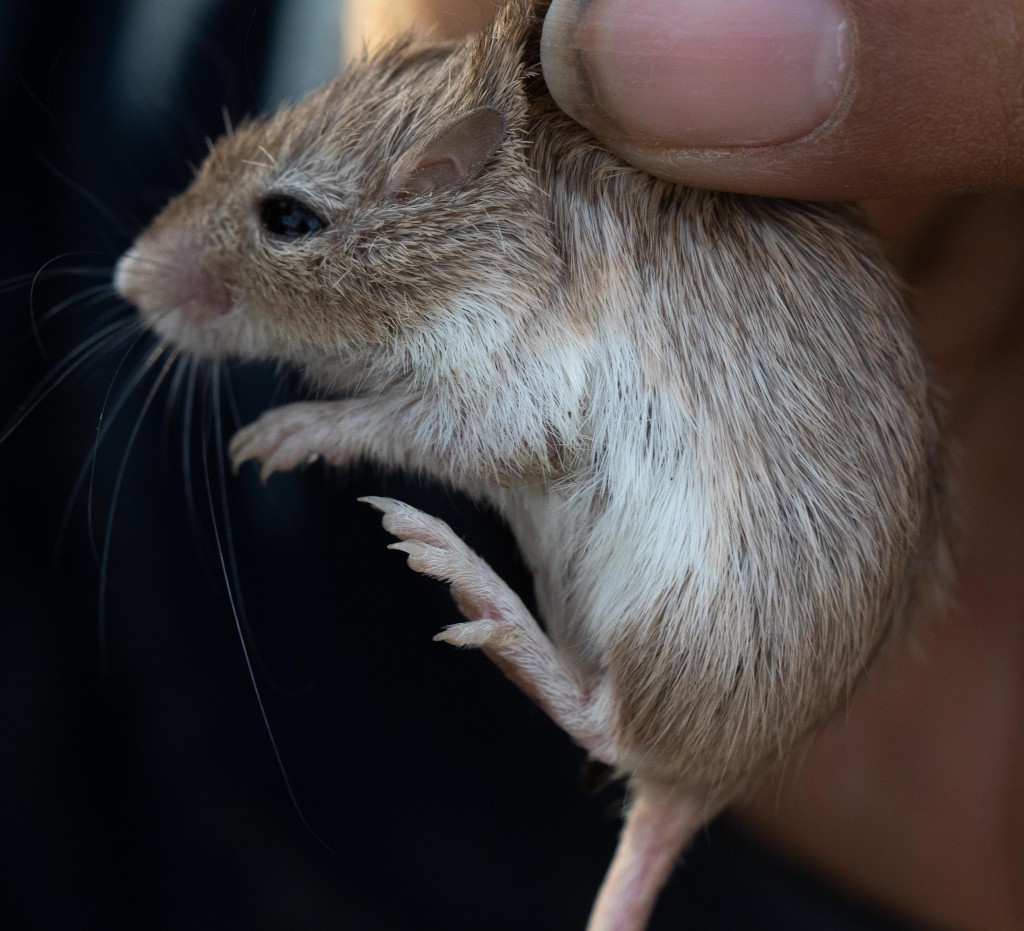
Desert Pocket Mouse, Chaetodipus penicillatus
At first Juan thought they were Desert Pocket Mice as these were the only contender in range. On closer inspection most, if not all, appeared to me to be too scruffy: they had many long butt hairs while I had thought Desert Pocket Mice are sleeker and less unkempt. So I tried to turn them into either Goldman’s or Rock Pocket Mice, though both are slightly out of range. After further discussion with experts when I got back I have recorded them as Desert Pocket Mice after all. Oh well
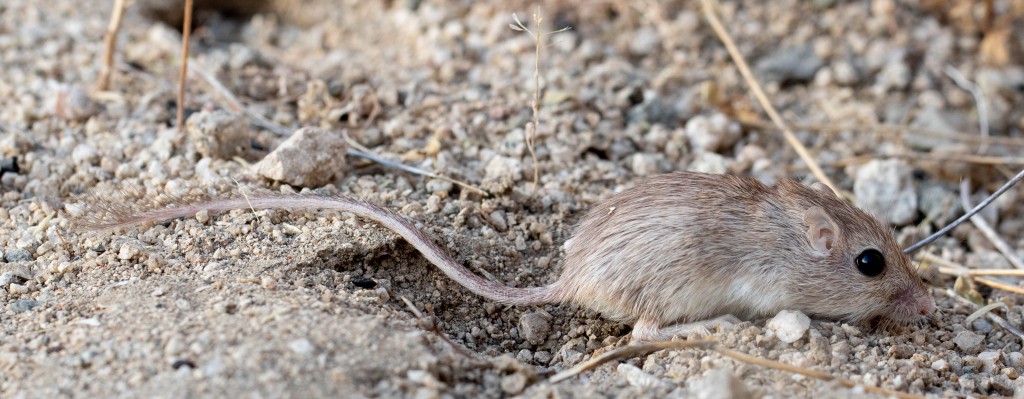
Desert Pocket Mouse, Chaetodipus penicillatus
And then we flew to Mexico City for the final leg of the trip.
Hidalgo
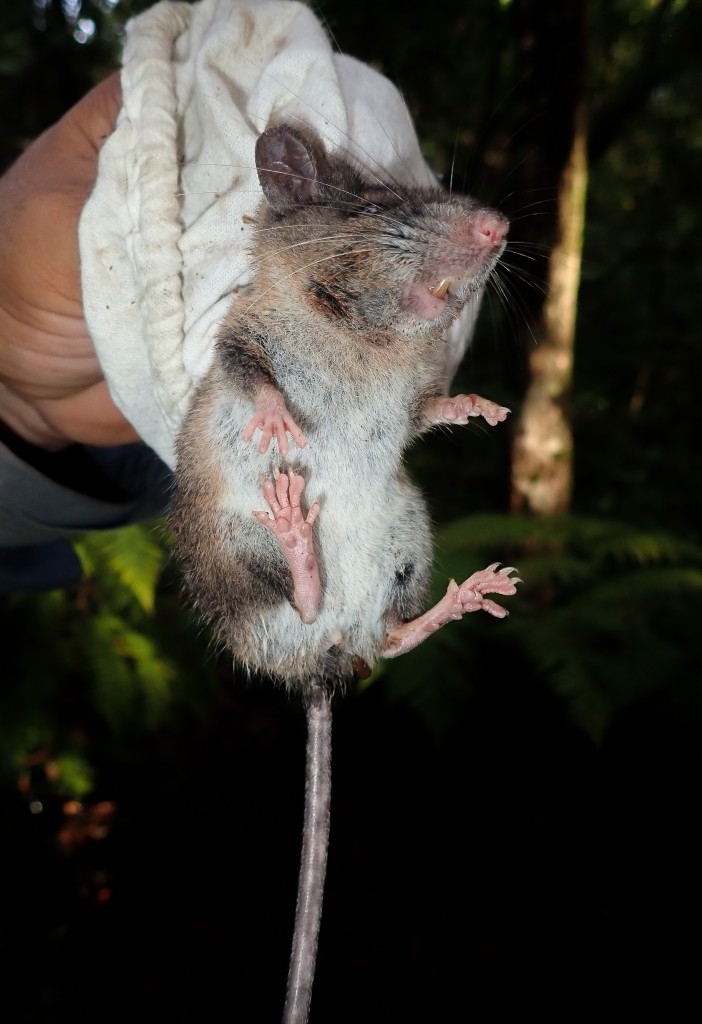
Nelson’s Giant Deer Mouse, Megadontomys nelsoni
After the now well-rehearsed “You reserved an SUV but we can offer you a minivan” routine at the car rental agency we drove – in our minivan – to Pachuca, a couple of hours from the airport and met Juan’s friend, and local biologist, Melany Aguilar in the late afternoon. En route we stopped at a roadside taco stand where Juan and Venkat has seen a White-eared Cotton Rat running around in the daytime in 2019. A group of dogs had taken up residence next to the tent. Not good for the rats. We didn’t see any.
El Chico
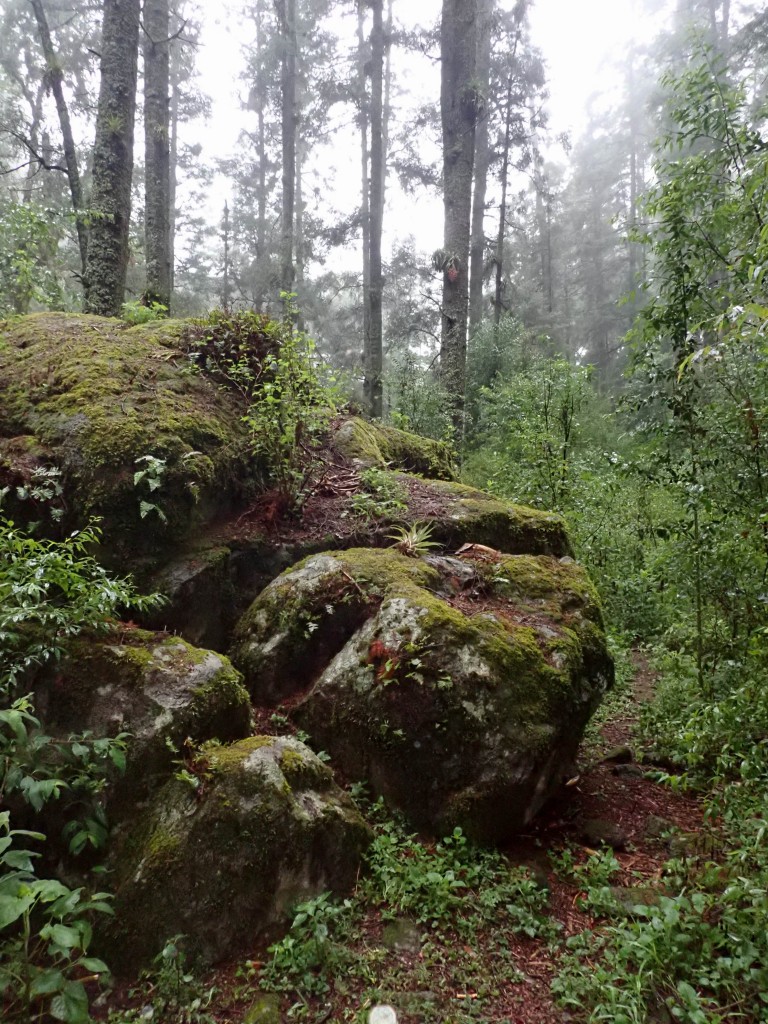
El Chico Park – trapping habitat
It was dusk by the time we had driven up to El Chico forest. We set our traps in two areas and spent the night in an empty hotel in an empty town (Mineral del Chico).
We had several targets here and I was worried that the steady rain through the night was going to reduce our chances. I was wrong.
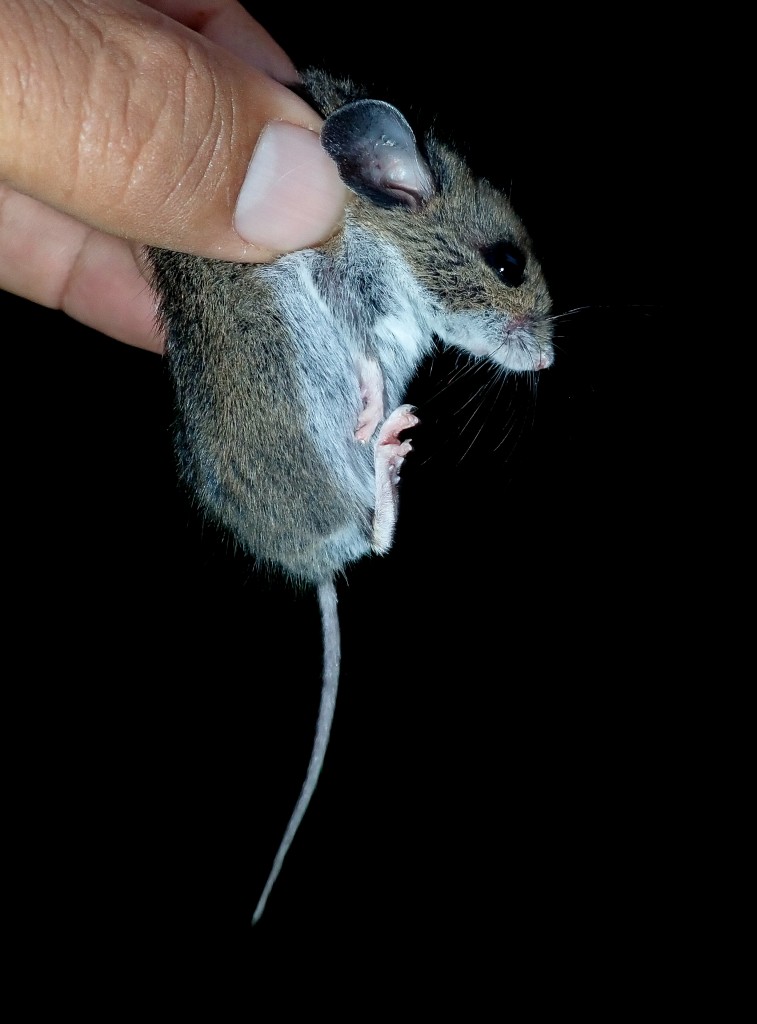
Black-eared Mouse, Peromyscus melanotis
In a few traps set on the edge of forest near the visitor centre, where we were targeting Mexican Voles, we caught several Black-eared Deer Mice.
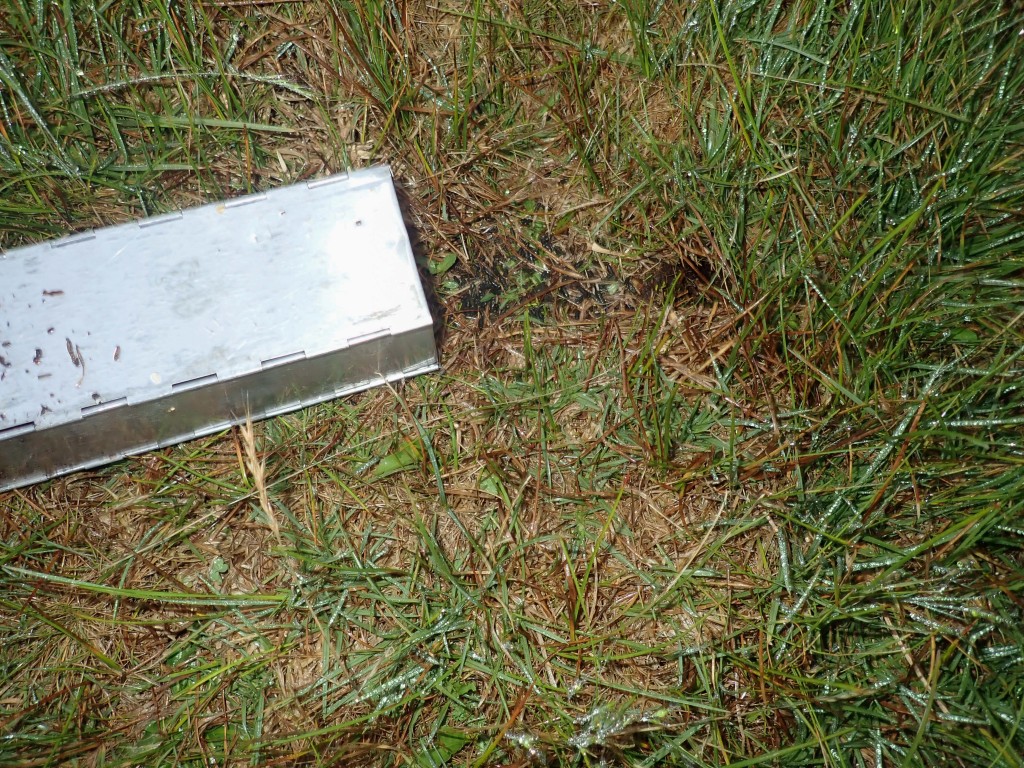
Mexican Vole burrow
In the early morning I scanned the wet meadow in front of the visitor centre with my thermal scope and saw several small mammals, all of which were presumably Mexican Voles, though I only saw one well enough to be sure. Their burrows and runways were obvious through the grass embankment.
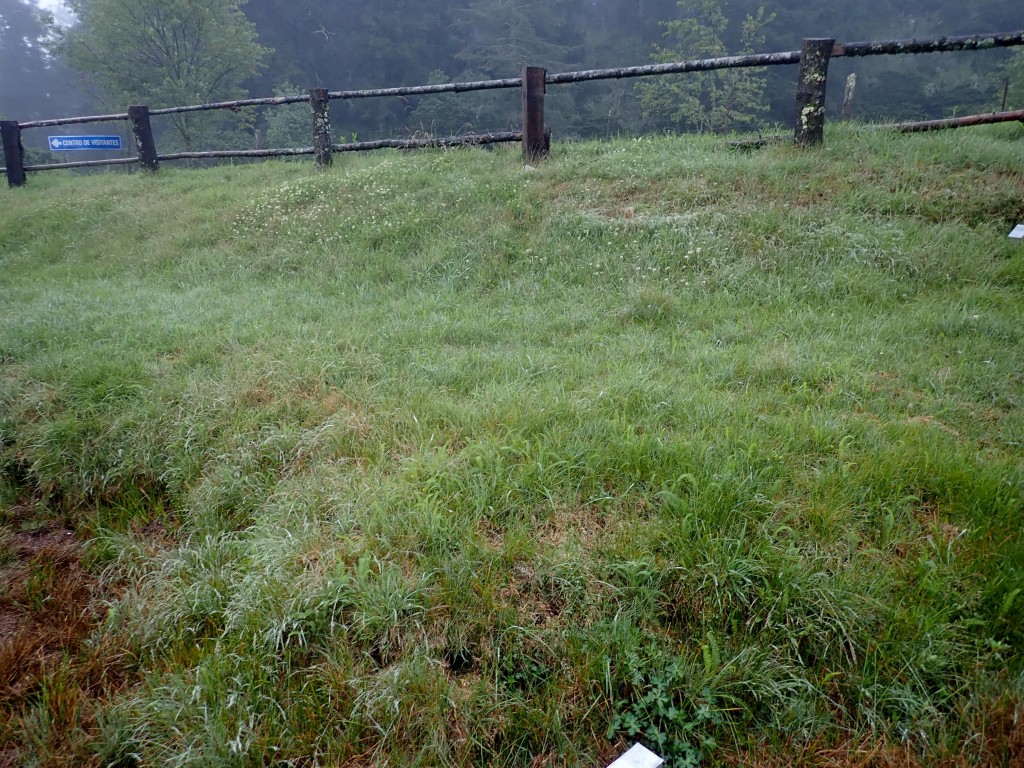
Mexican Vole habitat
Most of our traps were set along a forest trail.
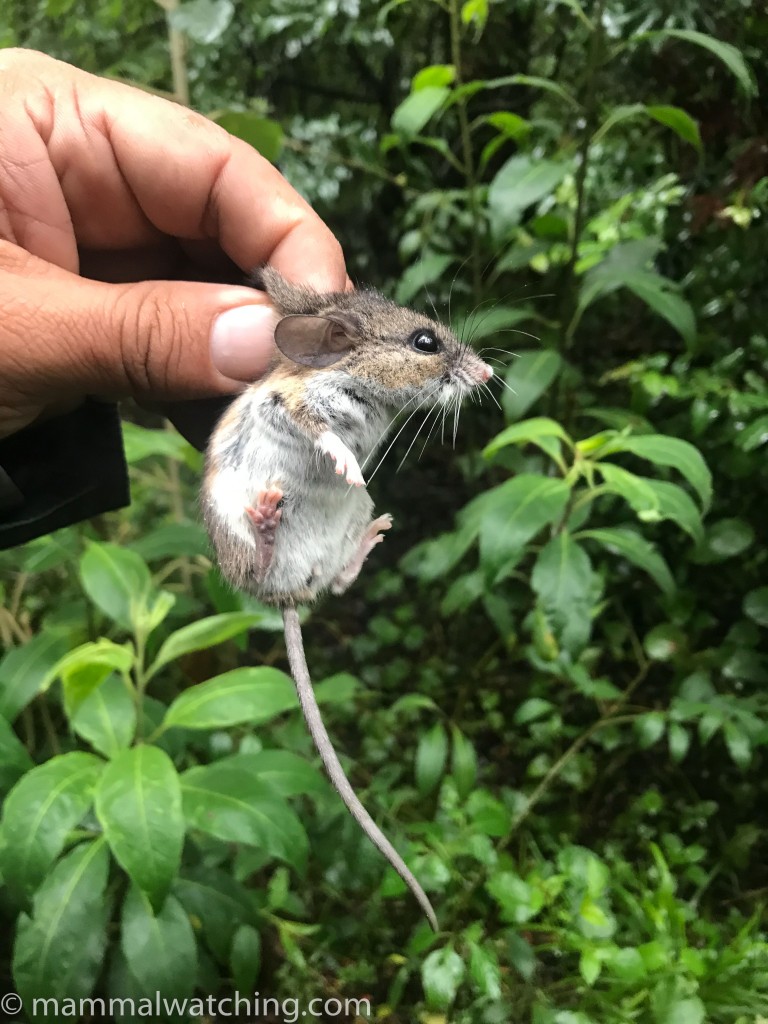
Nimble-footed Deer Mouse, Peromyscus levipes
The first two traps contained the two species we were searching for here: Nimble-footed and Transvolcanic Deer Mice.
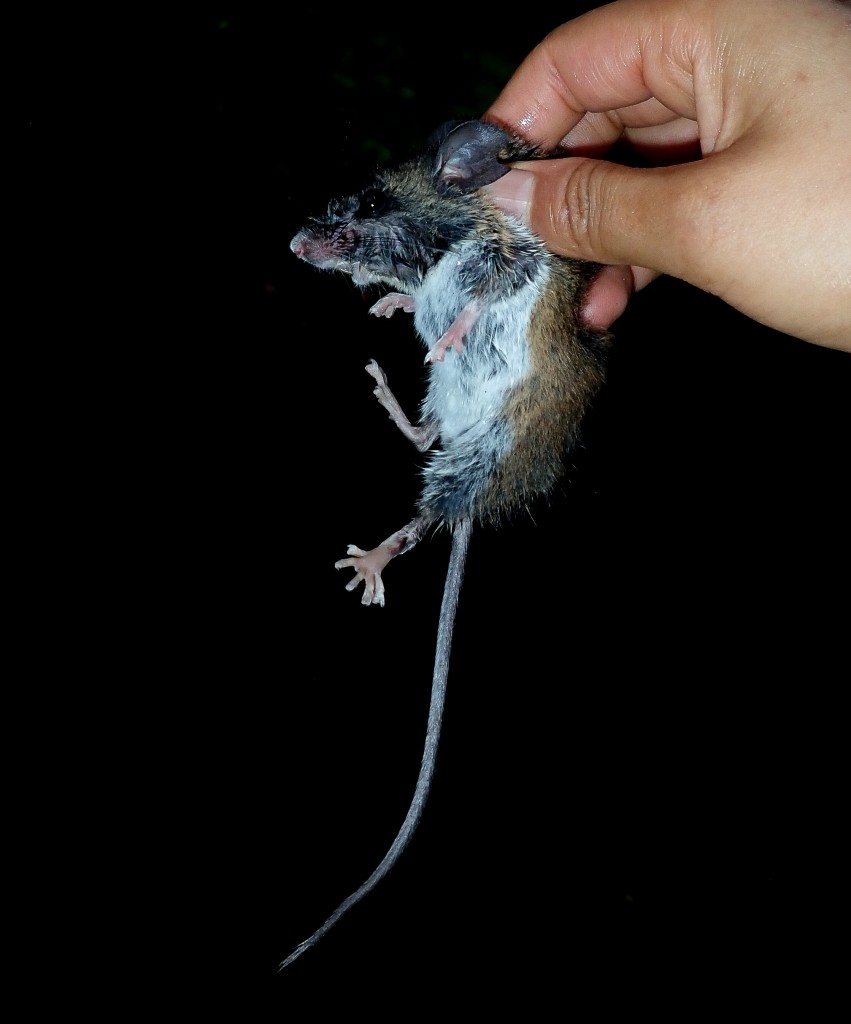
Transvolcanic Deer Mouse, Peromyscus hylocetes
The other traps housed a few more Nimble-footed Deer Mice and one Volcano Harvest Mouse, a species that I was not expecting: the fourth lifer of the morning.
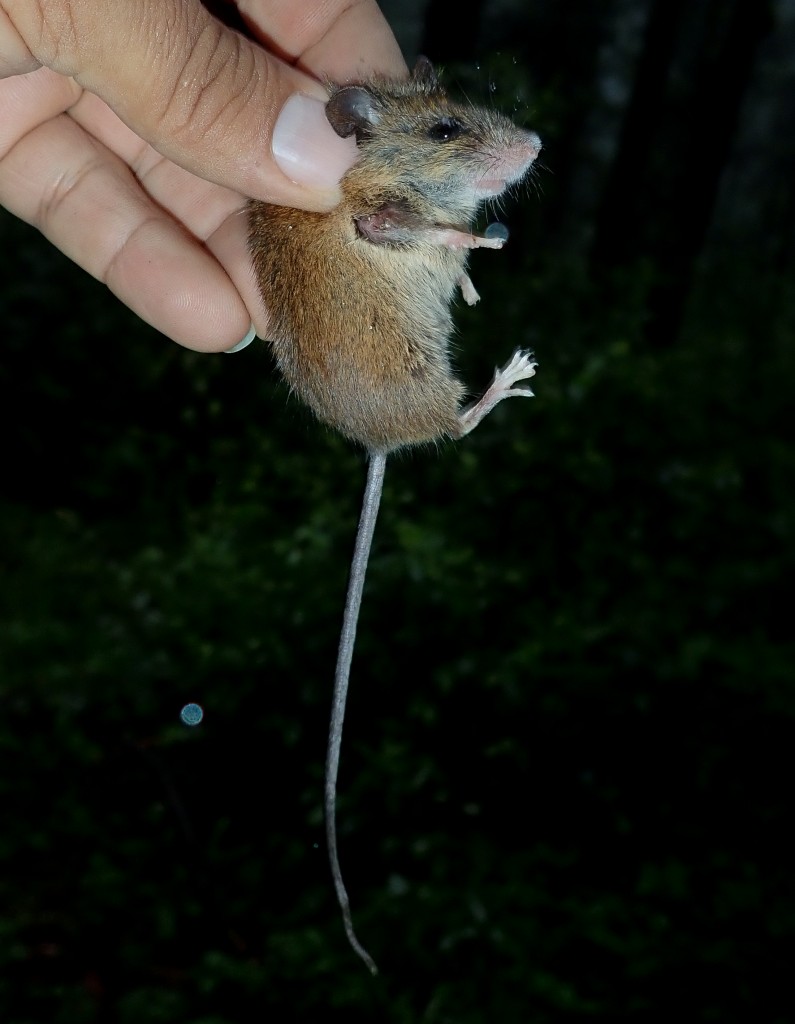
Volcano Harvest Mouse, Reithrodontomys chrysopsis
Venkat has seen Peter’s Squirrel along the road through the forest. I tried scanning with the heat scope but it was still raining, which reduced both the effectiveness of the scope and, I imagine, squirrel activity.
Zacualtipan
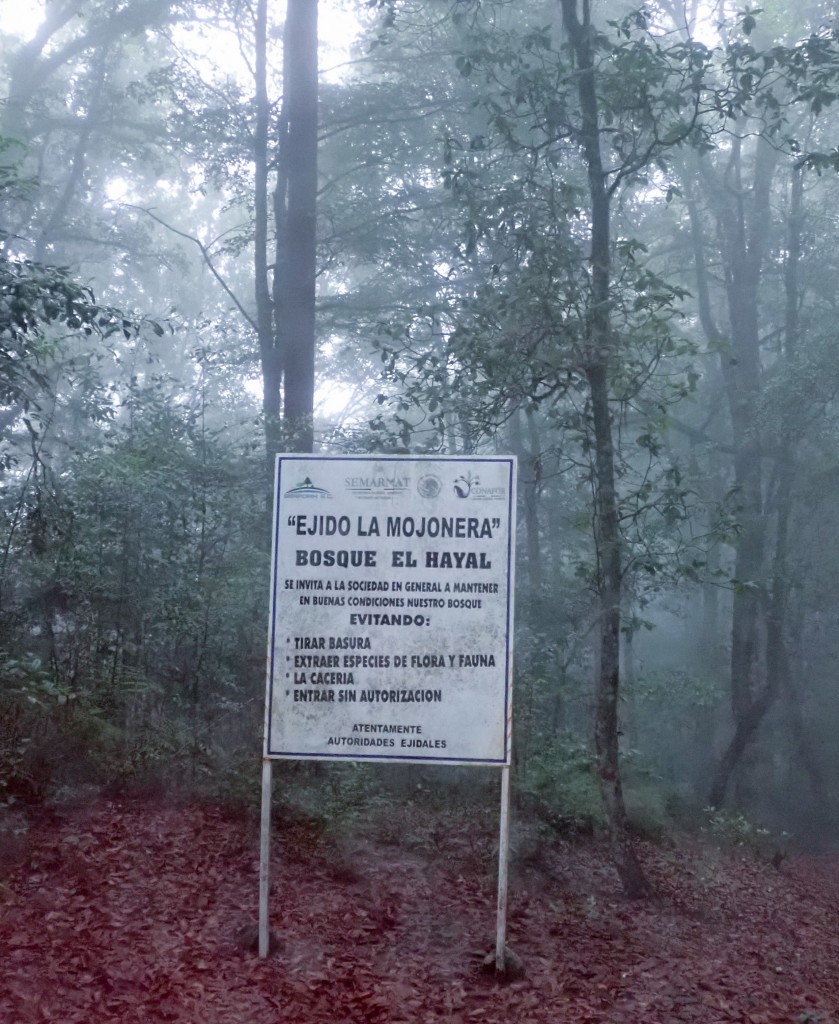
La Mojonera Cloud Forest
After taking a COVID test in Pachuca for my return to the States we drove three hours to Zacualtipan and the La Mojonera Cloud Forest.
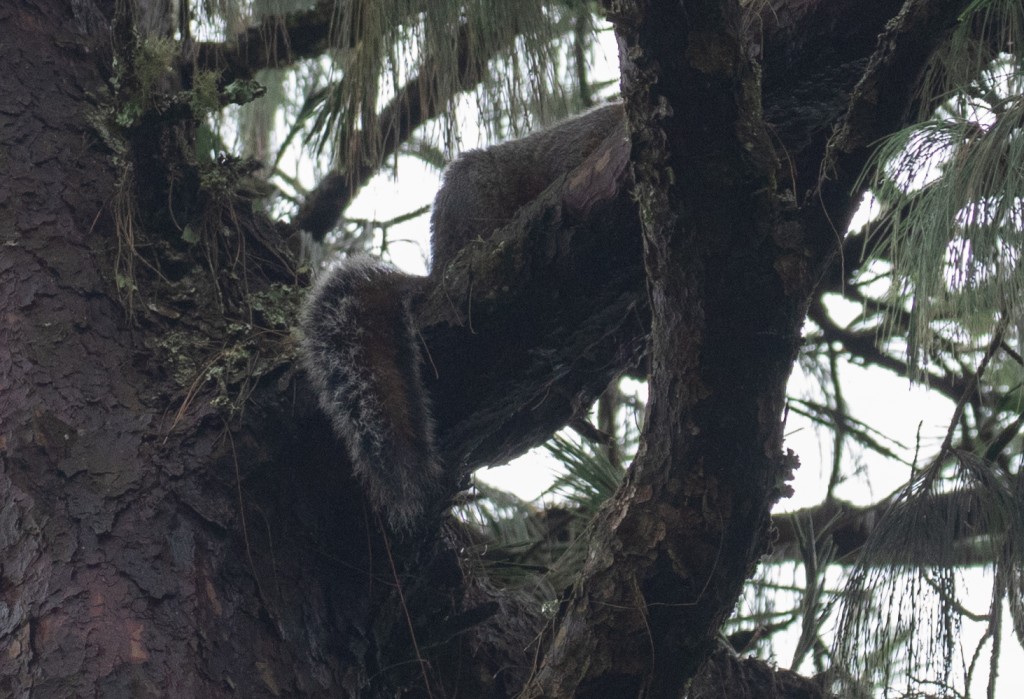
Peters’s Squirrel, Sciurus oculatus
There are both Deppe’s and Peter’s Squirrel here. We saw neither in the forest itself but both species were just next to the road by the entrance to the trail near here 20.6279° N, -98.6164° W . The Peter’s Squirrel in particular is said to be common in the pine trees along the road and it took me about 30 seconds to find one with the thermal scope. Best distinguished from a distance from Deppe’s by its much size and fluffier tail. So this could be a reliable spot for this species that can be a little tricky to find.
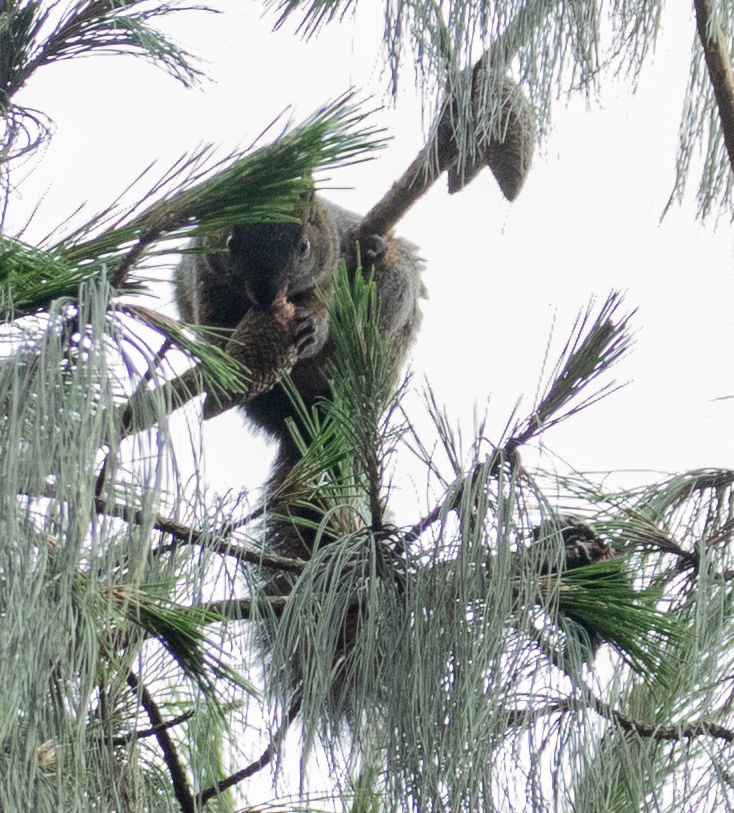
Peters’s Squirrel, Sciurus oculatus
La Mojonera is a beautiful slab of cloud forest, managed by the local community who are in negotiations to have it turned into a fully protected area. We had to arrange for permits with a local official and then pick up a local guide before we could set traps along the trail.
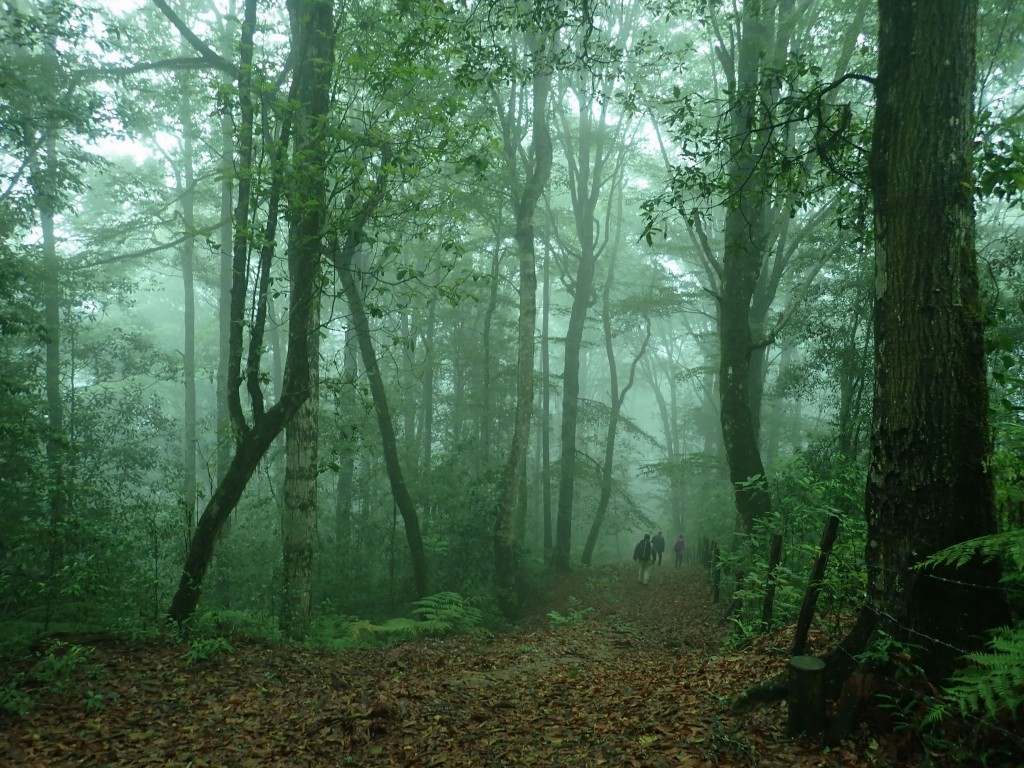
Trapping habitat, La Mojonera
Our guide was, top put it kindly, a character. After explaining that flying squirrels and bats were simply different life-stages of the same species he told us about “La Bomba”, a nearby Shangri La where at 9 a.m. every morning one could see huge rats. It was just “10 minutes down there” he said, pointing to a side trail, when we were almost back at the road.
There was something worrying familiar about this man, and I had PTSD flashbacks to “short detours” in Sulawesi, Thailand and many other places. I was deeply skeptical.
Juan cross examined him. Yes this was the quickest way, yes it was easy, yes it would take 10 minutes. So we thought we would give it a shot in case there were herds of Climbing Rats (Tylomys sp.) rampaging over La Bomba’s lush and verdant plains.
You can guess the rest. An hour later, after sliding, crawling, falling and stumbling down very steep slippery slopes, through thick bush and over barbed wire we reached La Bomba. It was a glorified shed next to a pond that seemed to be some kind of pumping station. No rats. No nothing.
To add insult to injury we discovered the walk back to the car took 15 minutes along a very easy trail. For the rest of the weekend we would use the phrase “La Bomba” at every opportunity to signify just about anywhere that might be further than we thought.
Our guide the next day was great. He spoke some English and he talked with pride about the forest and the community’s role in protecting it.
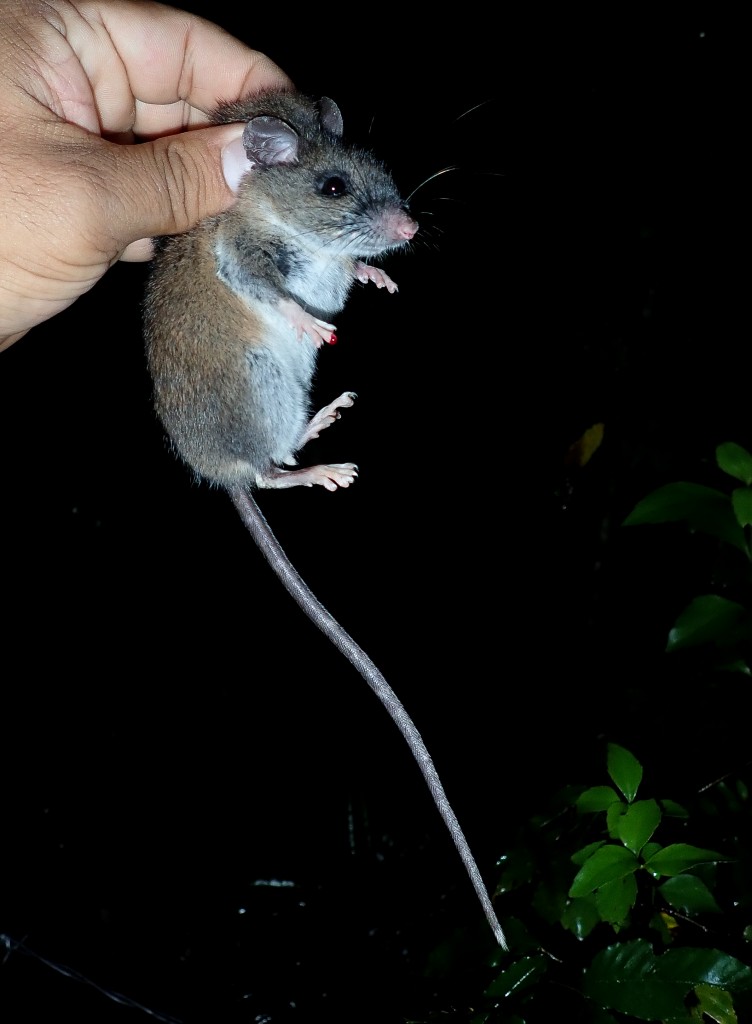
Blackish Deermouse, Peromyscus furvus
Trapping was also excellent. The key species here was Wide-rostrum Deer Mice (can someone please come up with a nicer name). We caught plenty. But some work published in 2022 shows the species here is in fact Blackish Deer Mouse (Peromyscus furvus) which I had seen in 2018 in Veracruz. Oh well.
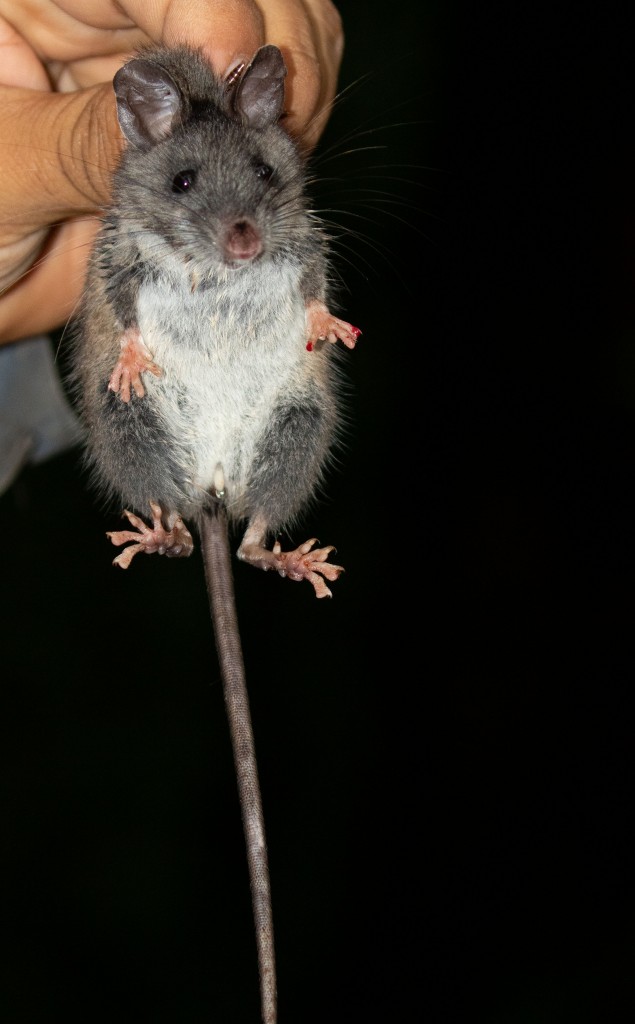
Blackish Deermouse, Peromyscus furvus
We also caught several other deer mice that I tried very hard to turn into Aztec Deer Mice but we eventually decided, on the basis of size, that might be White-ankled Mice, even though here in the cloud forest they have black ankles. The local species was split and, in 2022, is now Tamaulipas White-ankled Deermouse, Peromyscus collinus. Though it is still not clear whether this was the species we caught or whether it was a young Peromyscus levipes.
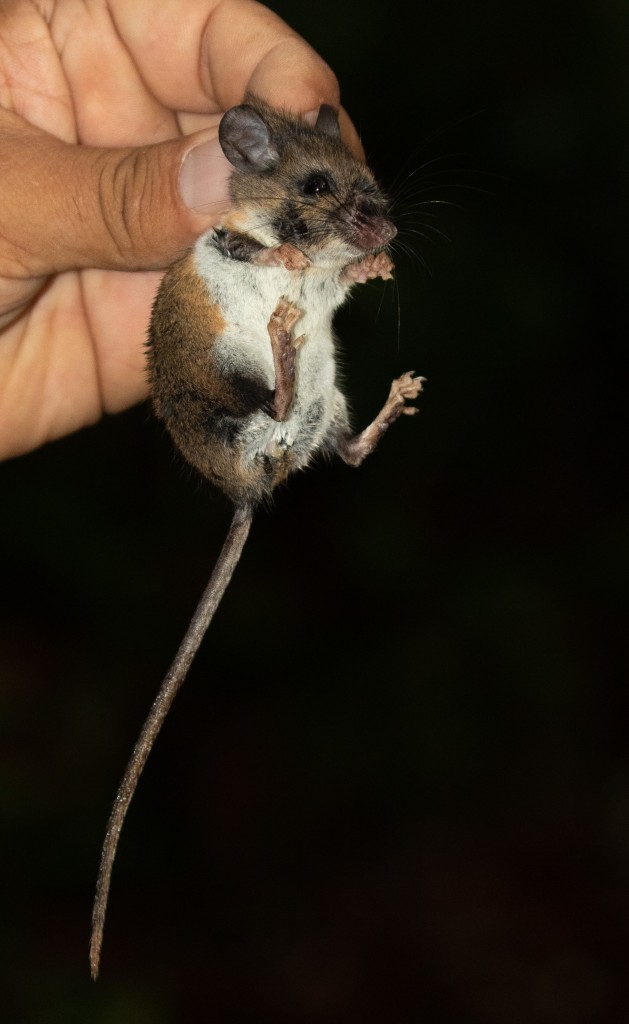
Possibly a Tamaulipas White-ankled Deermouse, Peromyscus collinus with black ankles … possibly Peromyscus levipes.
But best of all was a whopping deer mouse that defied all the measurements. Nothing seemed to fit until Juan realized it might not be a peromyscus at all and checked the giant deer mouse options.
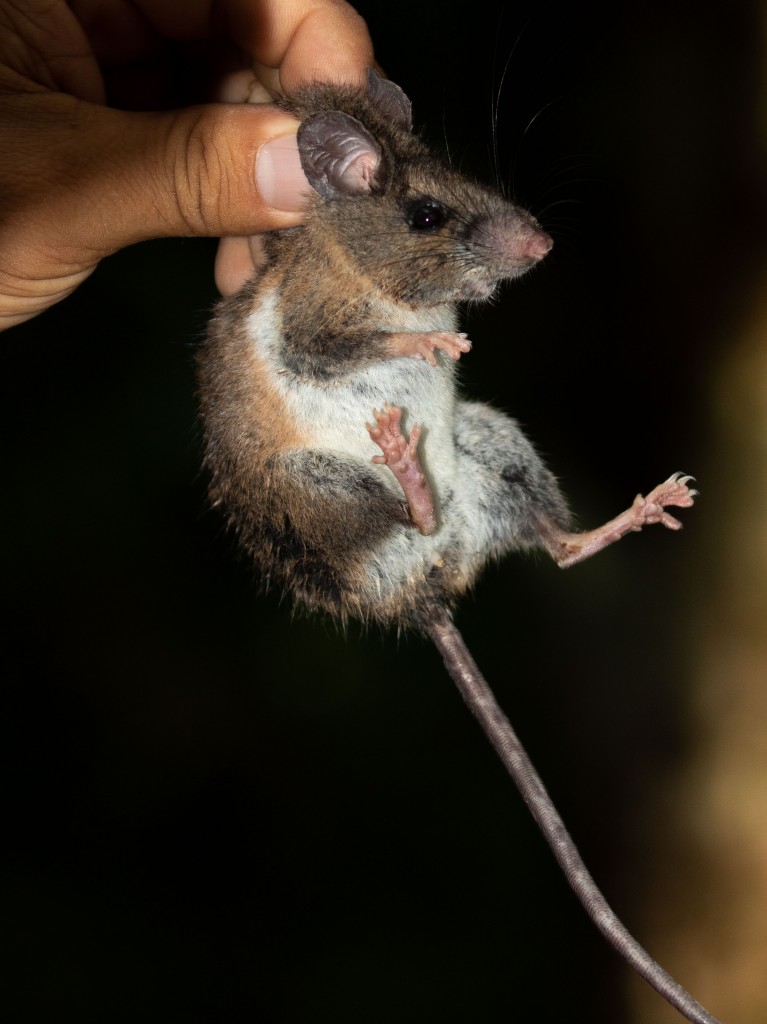
Nelson’s Giant Deer Mouse, Megadontomys nelsoni
Boom. It was a match for Nelson’s Giant Deer Mouse, a rare and little known species. This was also a significant range extension here though they have been found far away in the same mountain range. Neither Juan nor Melanie (who has trapped this forest many times) had seen one before. The mammal of the trip for me. It was more than twice the size of a regular deer mouse.
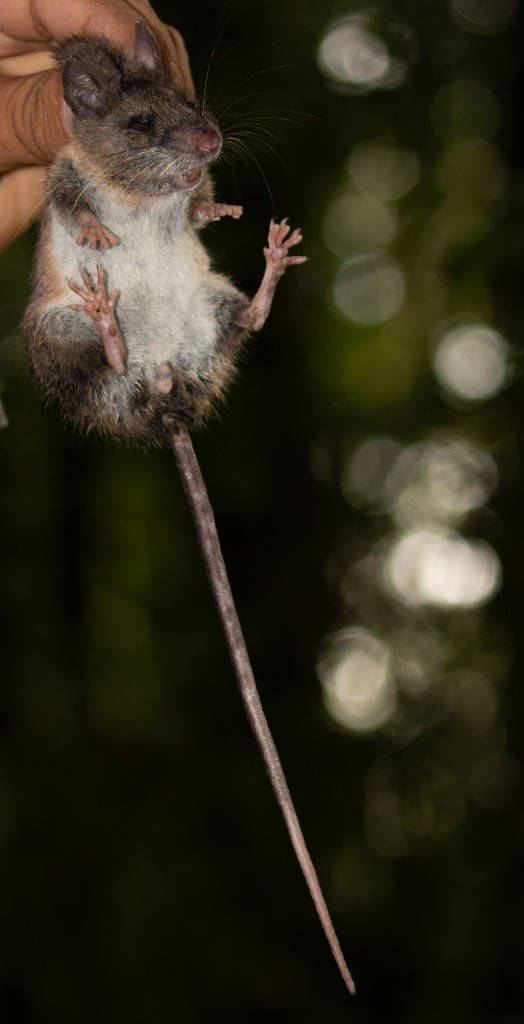
Nelson’s Giant Deer Mouse, Megadontomys nelsoni
We spent the rest of the morning and early afternoon looking for two species of bats in the immediate area. Greater Long-nosed Bats and Mexican Bog-eared Bats.
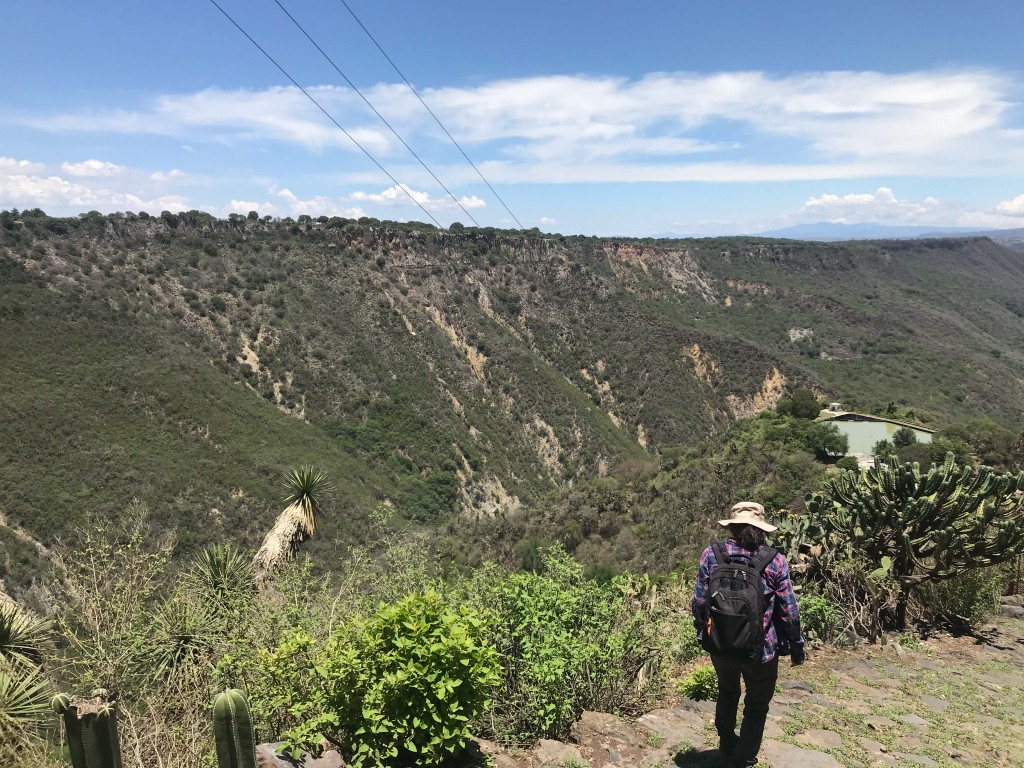
Barrancas view
The Mexican Long-nosed Bats are guaranteed between April and September at the Barrancas de Aguacatitla reserve, and during April and May the tunnels there house a maternity colony of 50,000 bats.
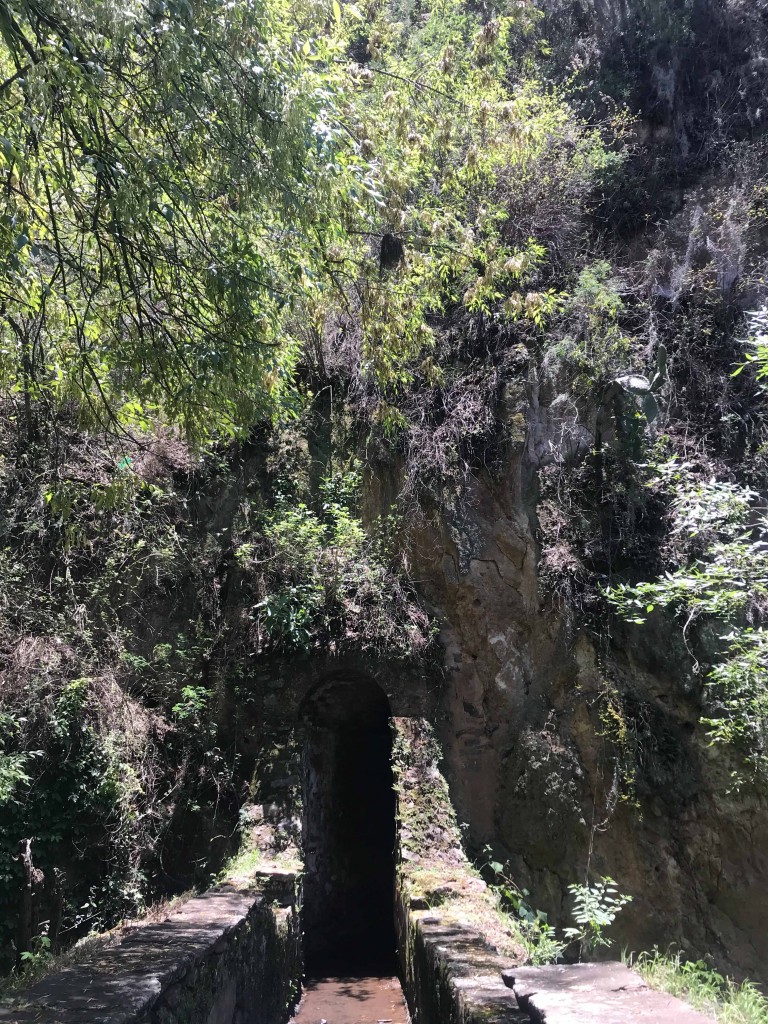
This small scenic private reserve has a spectacular view. A 15 minute, steep, walk down from the parking brings you to a cafe, and some ponds, where you can grab rubber boots (and I think a guide if you need one). From here you wade along some shallow canals and into the man-made tunnels where the bats live.
There are occasionally a few Mexican Big-eared Bats in here. But we could not spot any.
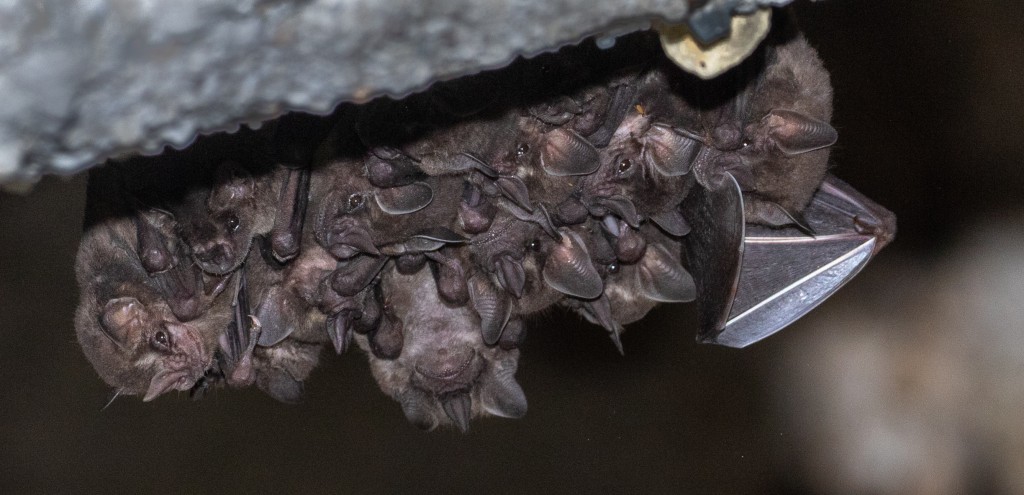
Aztec Fruit-eating Bat, Artibeus aztecus
After looking at a few groups of Aztec Fruit-eating Bats we walked deeper into the tunnel and began to see our first Greater Long-nosed Bats, stopping when we saw the maternity colony ahead of us.
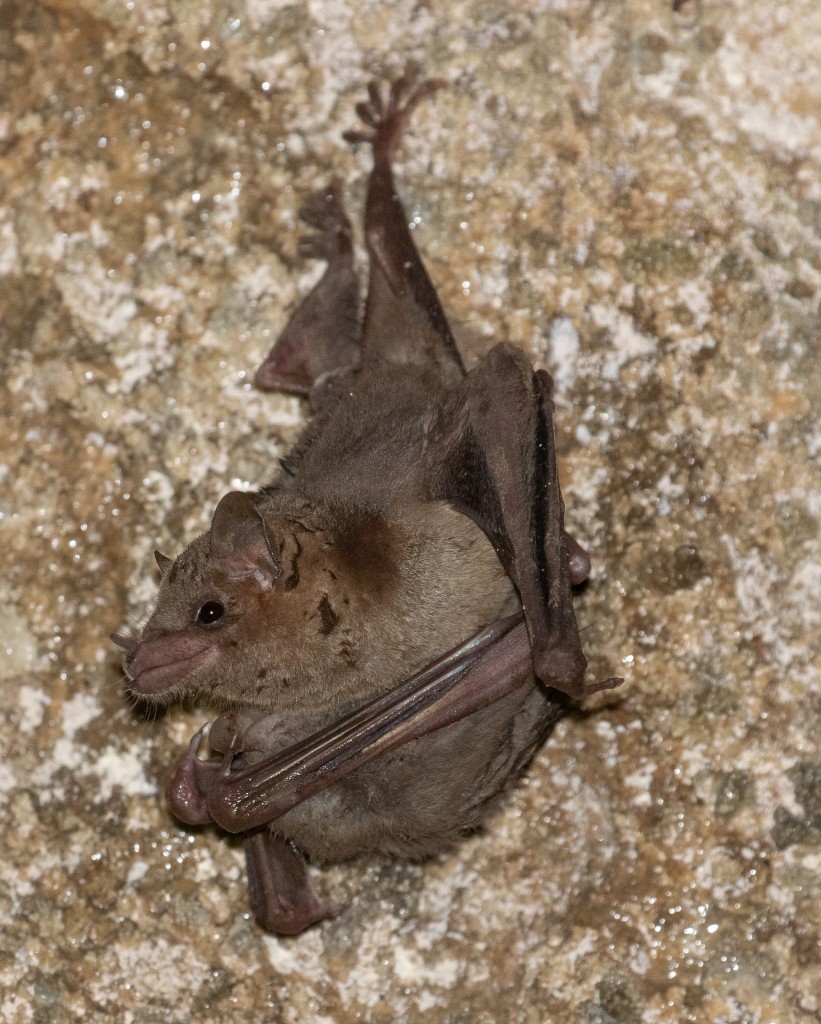
Greater Long-nosed Bat, Leptonycteris nivalis and baby
We didn’t enter the main chamber, not wanting to disturb the maternity colony, but even from a distance it was an impressive sight, with the cave face full of squirming bats.
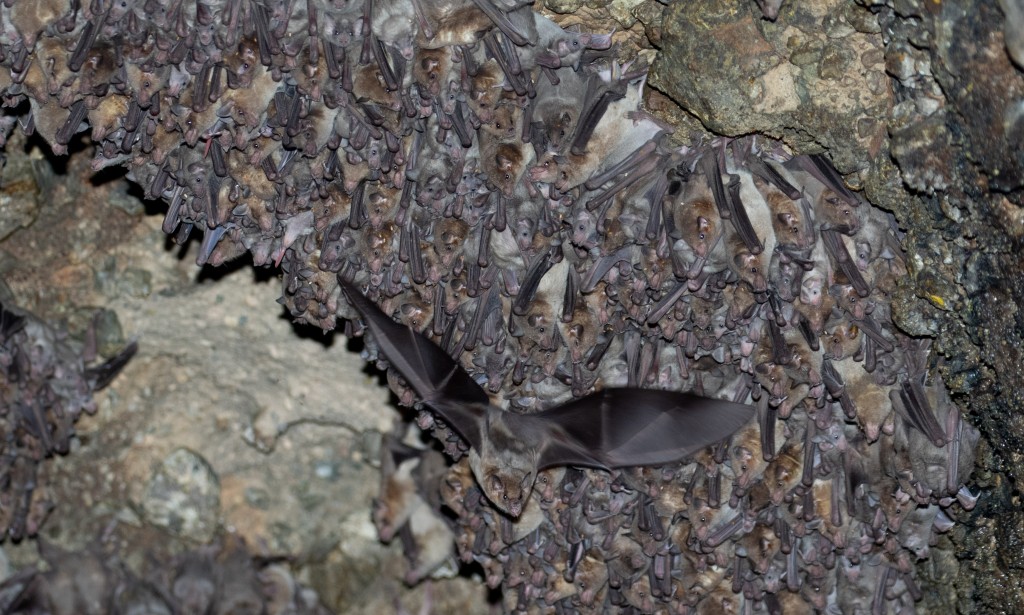
Some of the 50,000 Greater Long-nosed Bats, Leptonycteris nivalis
Our next stop was a cave which used to house a large colony of Mexican Big-eared Bats. Melanie had not visited for several years and when we arrived the cave had been consumed by some sort of theme park, full of people ziplining, hiring boats or paying to enter the bat caves that were now illuminated. Needless to say there were no bats.
Mexican Big-eared Bats are a difficult species to see and one I would love to find. We flirted with the idea of heading to the mountains to some caves that Melanie was sure would be occupied but it was all too complicated in a minivan and with a flight to catch the following day.
After dropping Melanie back home Juan and I stopped at a city park in Pachuca where he and Venkat had seen Mexican Ground Squirrels and a lot of Southern Pocket Gopher diggings. We didn’t see any ground squirrels during an hour there in the late afternoon, and I could only find one or two remotely fresh gopher mounds.
Mexico City
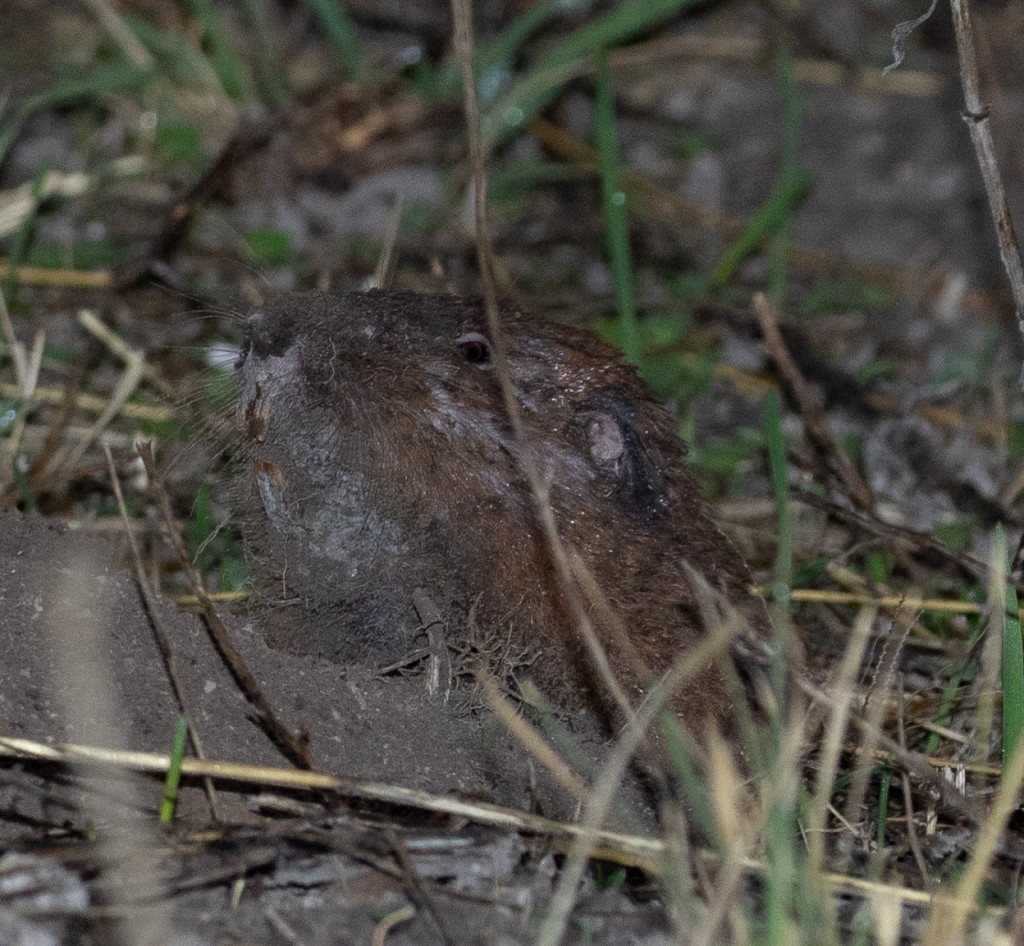
Smoky Pocket Gopher, Cratogeomys fumosus tylorhinus
Juan and I drove to our hotel in Ecatapec. It took an hour reach the hotel, and another 90 minutes to actually park there: construction work meant the off ramp to the hotel was shut and as we tried to find alternative routes we were repeatedly swept into a hideously busy one way circuit several miles long. This happened three times before I managed to find a route through a mall parking lot after abandoning Google Maps and trying Waze. Juan was still speaking to me, just about.
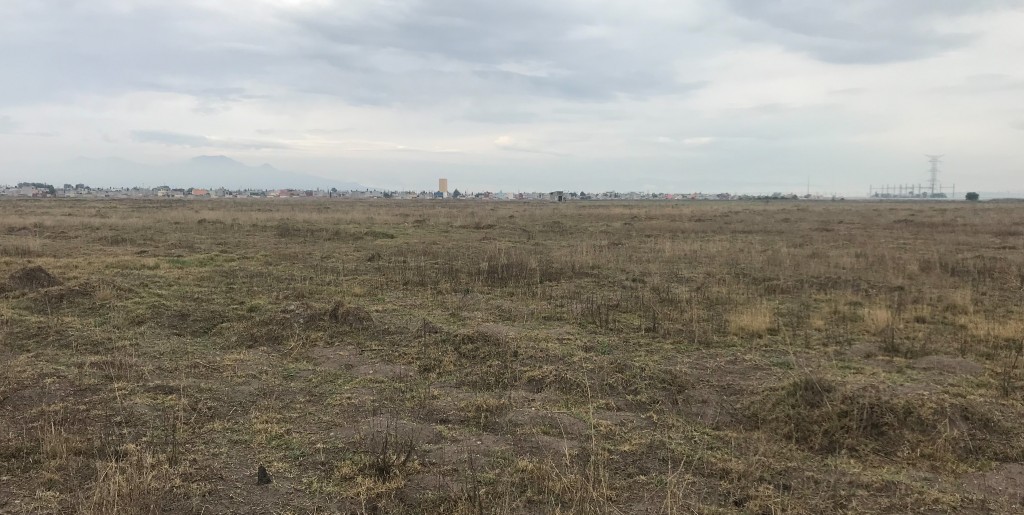
Ecatapec Eco Park
The next morning at dawn we met Zarah Itzel, a biologist working on the local pocket gophers, who took us to her study site in an ecological park here. A last fragment of natural habitat, surrounded by a greedy city nibbling on all sides.
While Zarah and Juan tried – and failed – to catch gophers here using live traps, I wandered around with my thermal scope at first light and spotted several active on the surface. But drizzle and poor light meant photography was tricky.
There are plenty of raptors in the park and Zarah’s analysis of raptor pellets confirms that the gophers here are Smoky Pocket Gophers.
We also looked for White-eared Cotton Rats. I saw one rodent in the early morning but only through the heat scope. Very likely a cotton rat but impossible to be sure.
And with the last lifer of the trip ticked off we drove to the airport.
Gracias
A huge thanks to those who helped with this trip, including Melany Aguilar in Hidalgo, Zarah Itszel in Ecatapec, and Gerardo Machado, Diego Barrales and Francisco Farriols Jr in Mazatlan. But the biggest thanks go of course to Juan Cruzado who never stops working in the field and always has a smile, no matter how bad the walk to La Bomba or the Mexico City traffic.
Trip List
DASYPODIDAE
Nine-banded Armadillo (Dasypus novemcinctus)
LEPORIDAE
Eastern Cottontail (Sylvilagus floridanus)
HETEROMYIDAE
Painted Spiny Pocket Mouse (Heteromys pictus)
Bailey’s Pocket Mouse (Chaetodipus baileyi)
Desert Pocket Mouse (C.penicillatus)
Sinaloan Pocket Mouse (C.pernix)
GEOMYIDAE
Smoky Pocket Gopher (Cratogeomys fumosus tylorhinus)
SCIURIDAE
Collie’s Squirrel (Sciurus colliaei)
Deppe’s Squirrel (S.deppei)
Peters’s Squirrel (S.oculatus)
CRICETIDAE
Mexican Vole (Microtus mexicanus)
Sonoran Woodrat (Neotoma phenax)
Volcano Harvest Mouse (Reithrodontomys chrysopsis)
Tamaulipas White-ankled Deermouse (Peromyscus collinus)(?)
Cactus Mouse (P. eremicus)
Blackish Deermouse (P.furvus)
Transvolcanic Deermouse (P.hylocetes)
Nimble-footed Deer Mouse (P.levipes)
Black-eared Mouse (P.melanotis)
Mesquite Mouse (P.merriami)
Nayarit Deer Mouse (P.simulus)
Gleaning Deer Mouse (P.spicilegus)
Nelson’s Giant Deer Mouse (Megadontomys nelsoni)
EMBALLONURIDAE
Gray Sac-winged Bat (Balantiopteryx plicata)
PHYLLOSTOMIDAE
California Leaf-nosed Bat (Macrotus californicus)
Waterhouse’s Leaf-nosed Bat (M.waterhousii)
Merriam’s Long-tongued Bat (Glossophaga mutica)
Greater Long-nosed Bat (Leptonycteris nivalis)
Little Yellow-shouldered Bat (Sturnira lilium)
Aztec Fruit-eating Bat (Artibeus aztecus)
Hairy Fruit-eating Bat (A.hirsutus)
Jamaican Fruit-eating Bat (A.jamaicensis)
Great Fruit-eating Bat (A.lituratus)
Pygmy Fruit-eating Bat (A.phaeotis)
VESPERTILIONIDAE
Little Yellow Bat (Rhogeessa parvula)
PROCYONIDAE
White-nosed Coati (Nasua narica)
36 species, 15 lifers (in bold).
2 Comments
Leave a Reply
You must be logged in to post a comment.


Venkat Sankar
Lovely! Hope Juan is doing well. I had to laugh at the traffic story, as I’ve done the same thing to him a couple of times in Mexico City… Thanks for preparing some sites for my next trip 😉